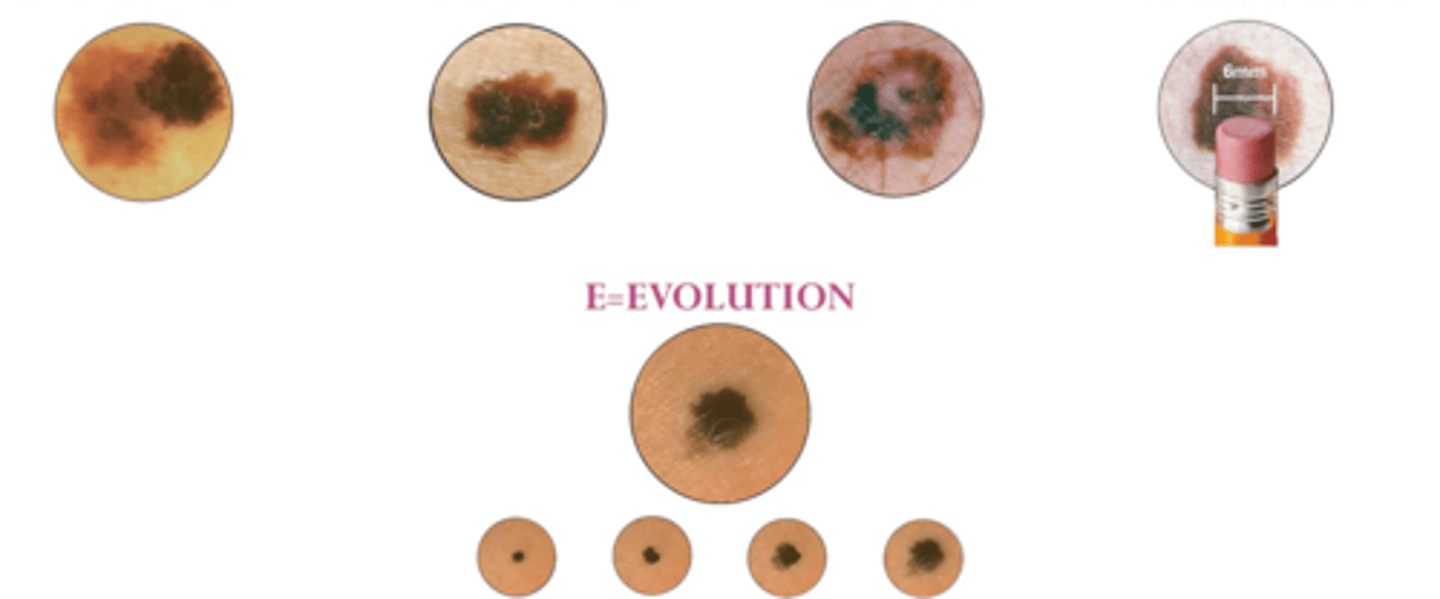Signs, Symptoms and Diseases in the Integumentary System
1/35
There's no tags or description
Looks like no tags are added yet.
Name | Mastery | Learn | Test | Matching | Spaced |
|---|
No study sessions yet.
36 Terms
scale
Flake of dried Epidermis (Psoriasis/dandruff)
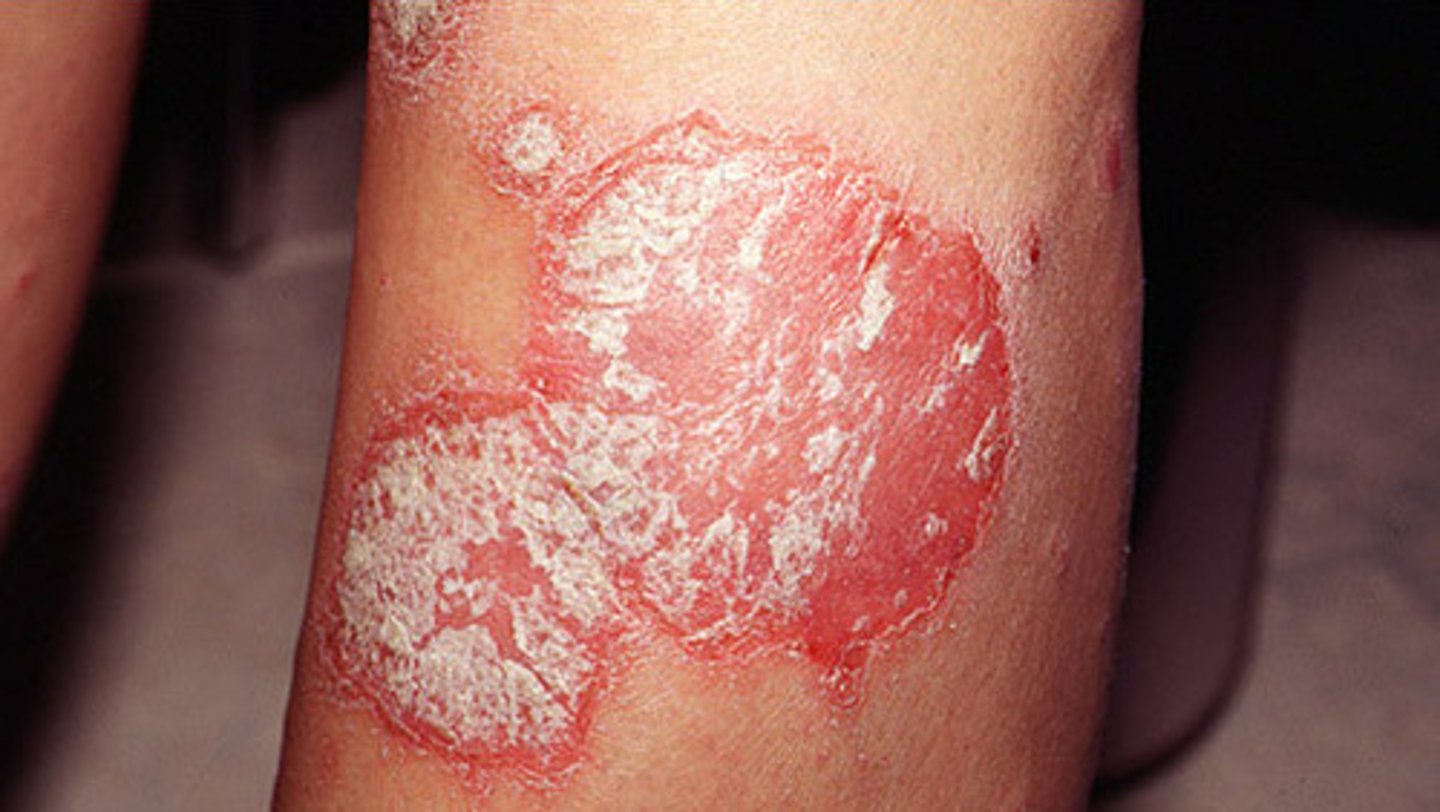
Bulla
Large Fluid-filled elevation (blisters)
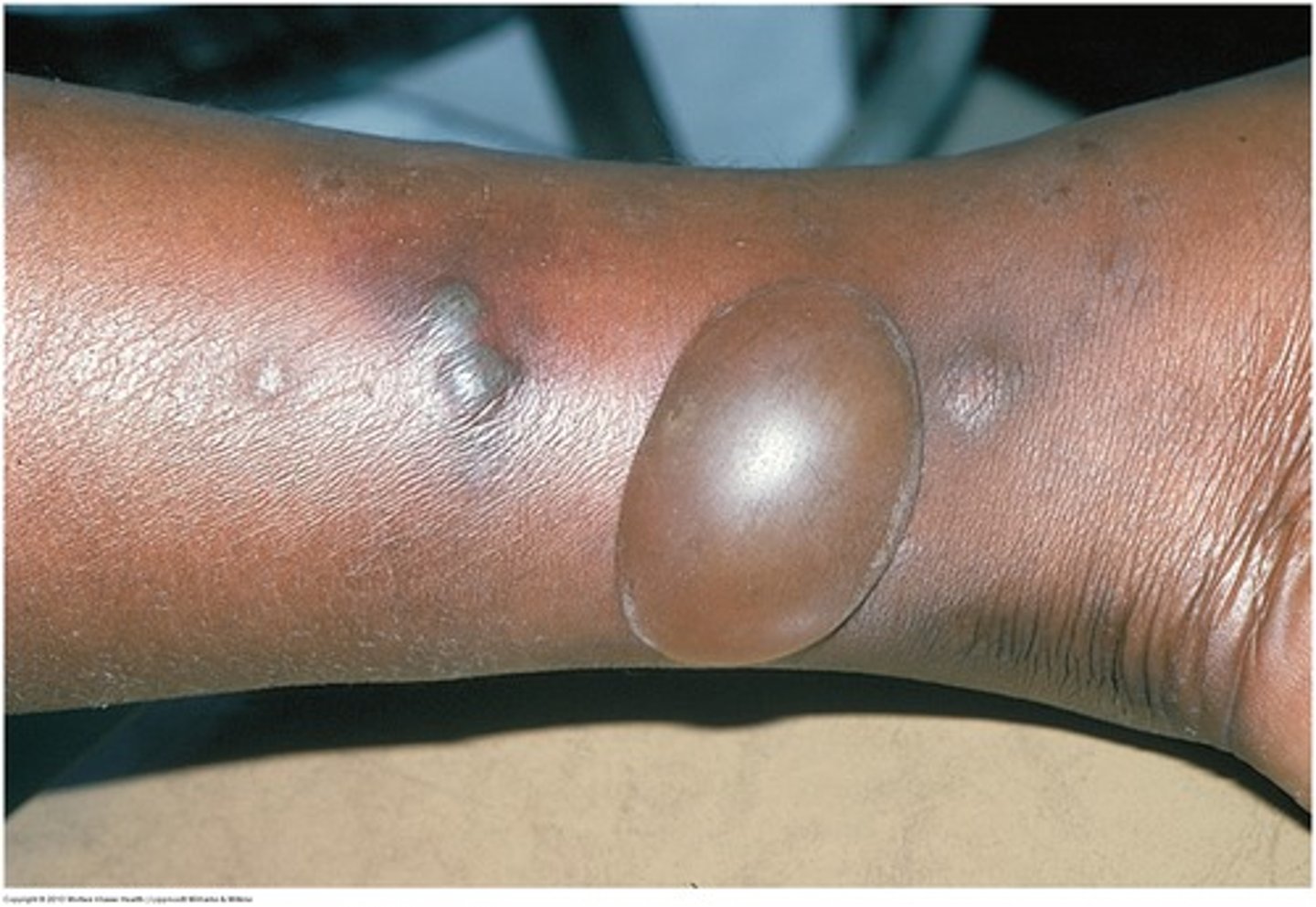
Versicle
small clear fluid-filled elevation
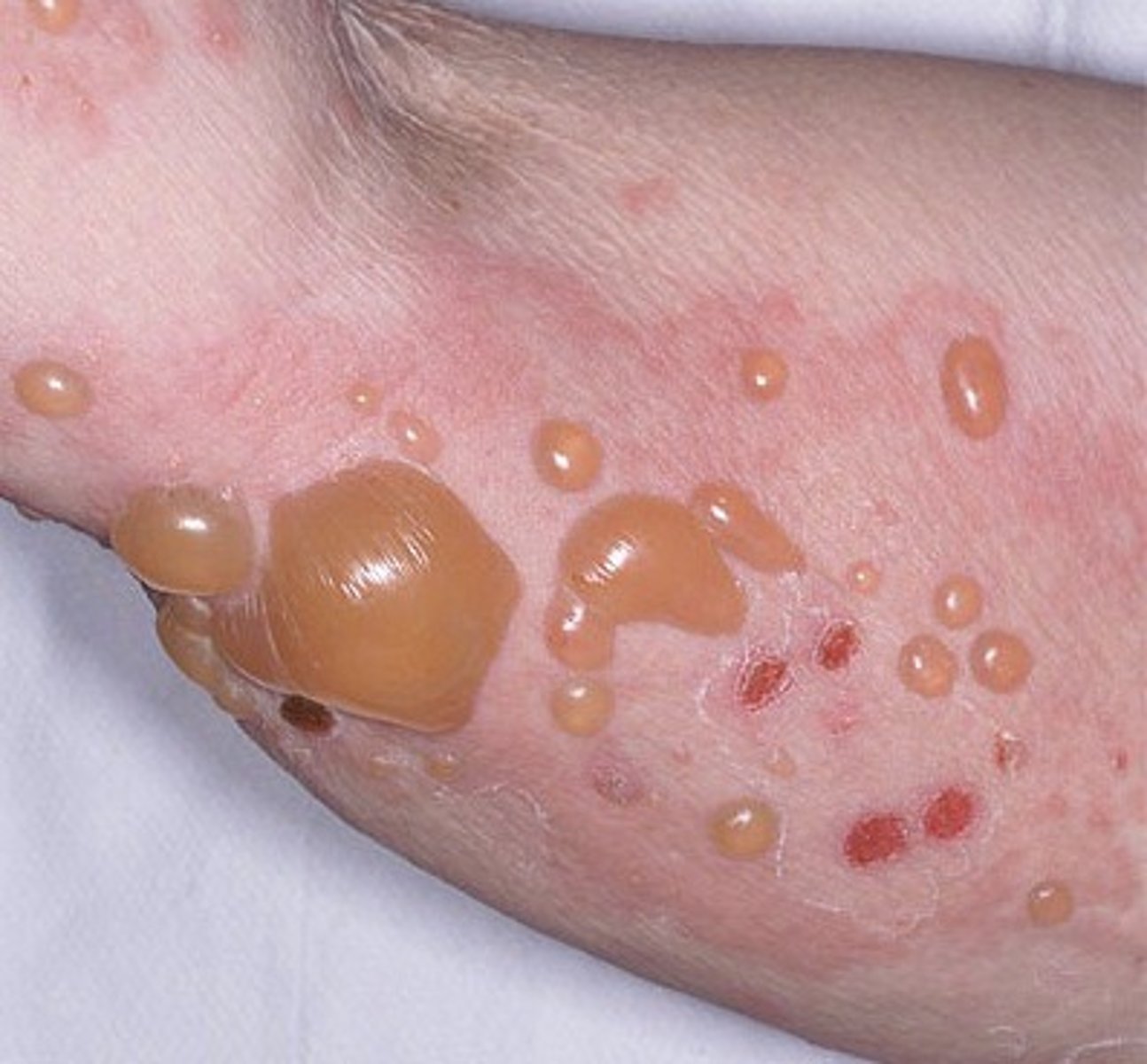
Macula
Flat discolored lesion (freckle/age spot)
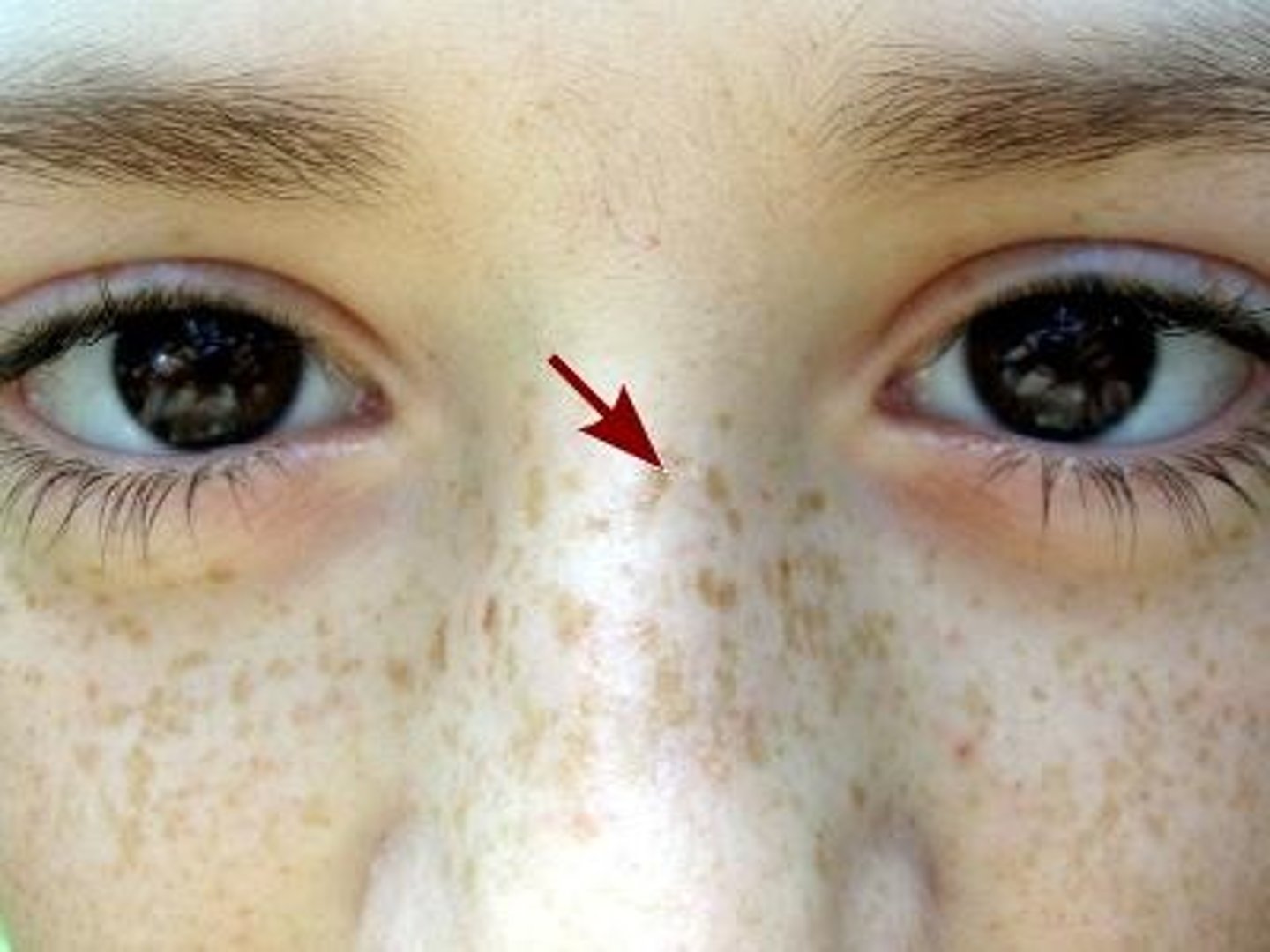
Papule
small, solid, raised lesion (wart)
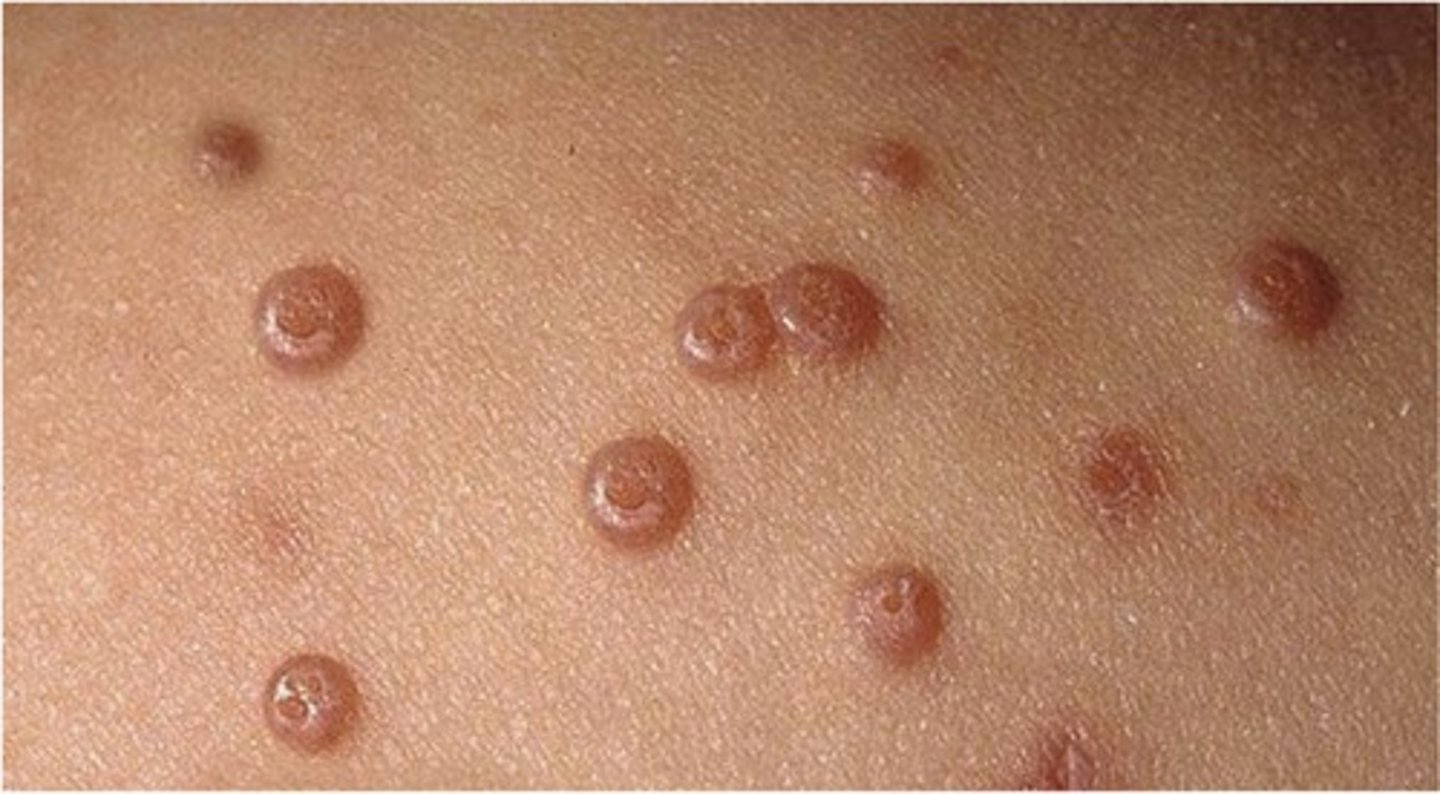
Crust
Dried Exudate > fluid from tissue (impetigo)
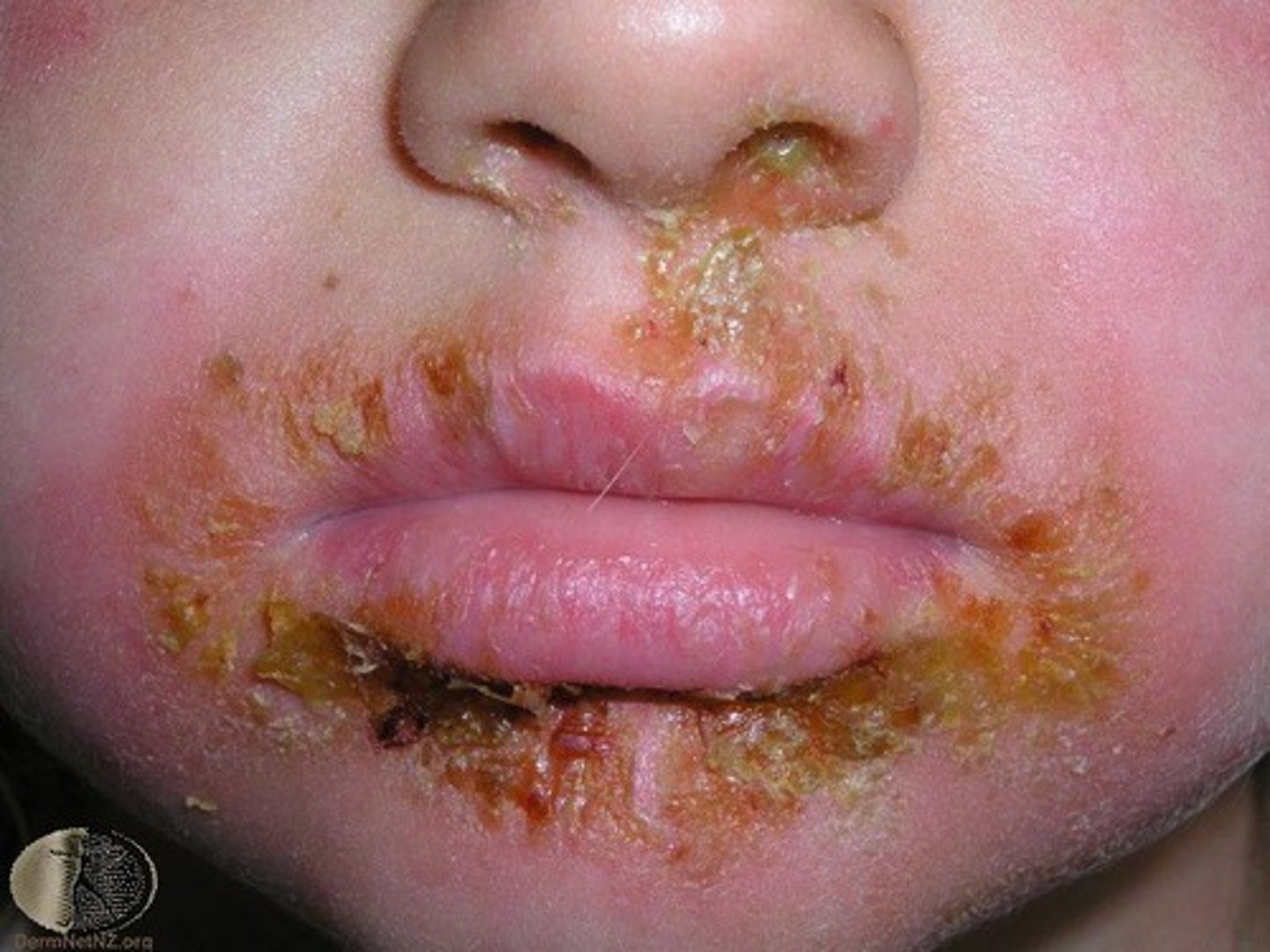
Tumor
Solid Mass can extend into the epidermis
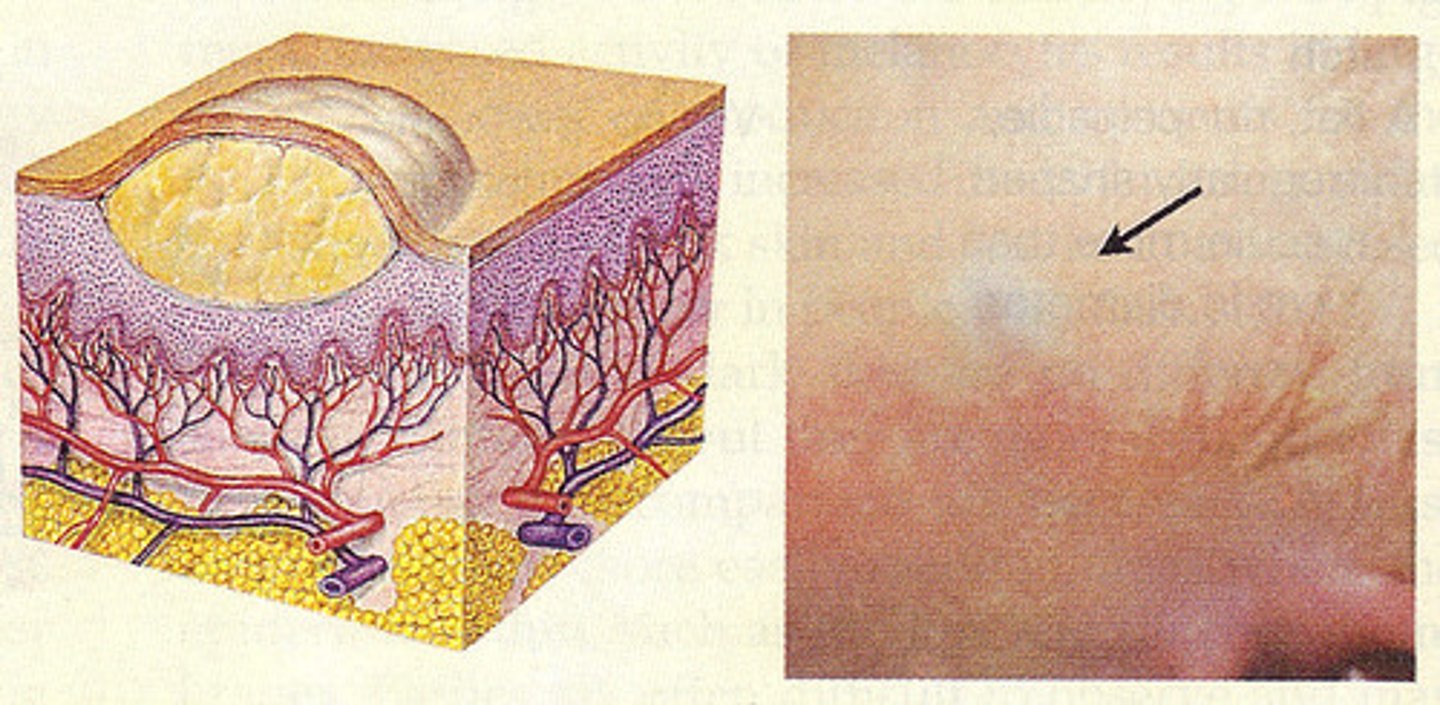
Polyp
Stalk-like growth from Mucous membrane
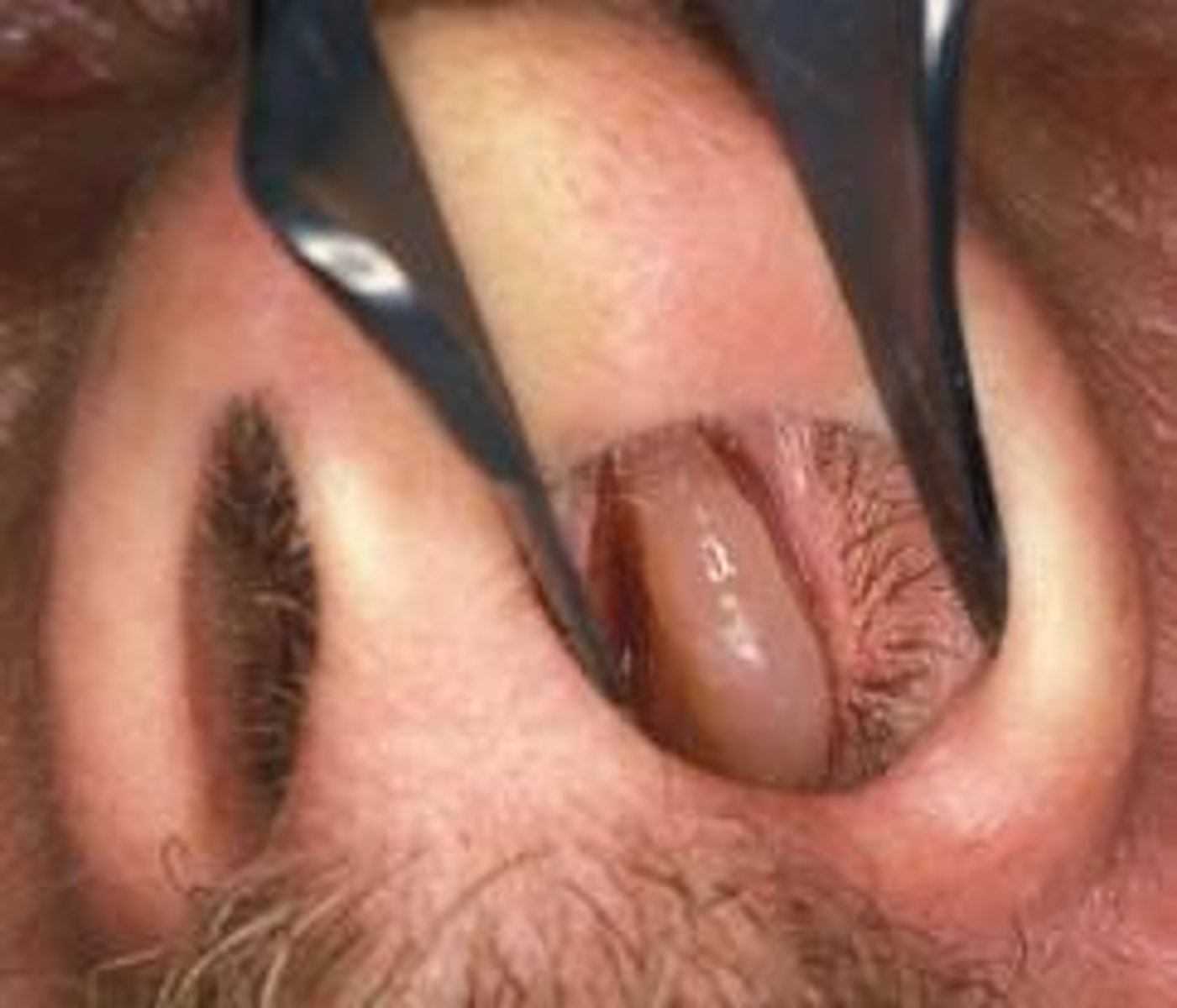
Pustule
small raised area of skin containing Pus (type of pimple)
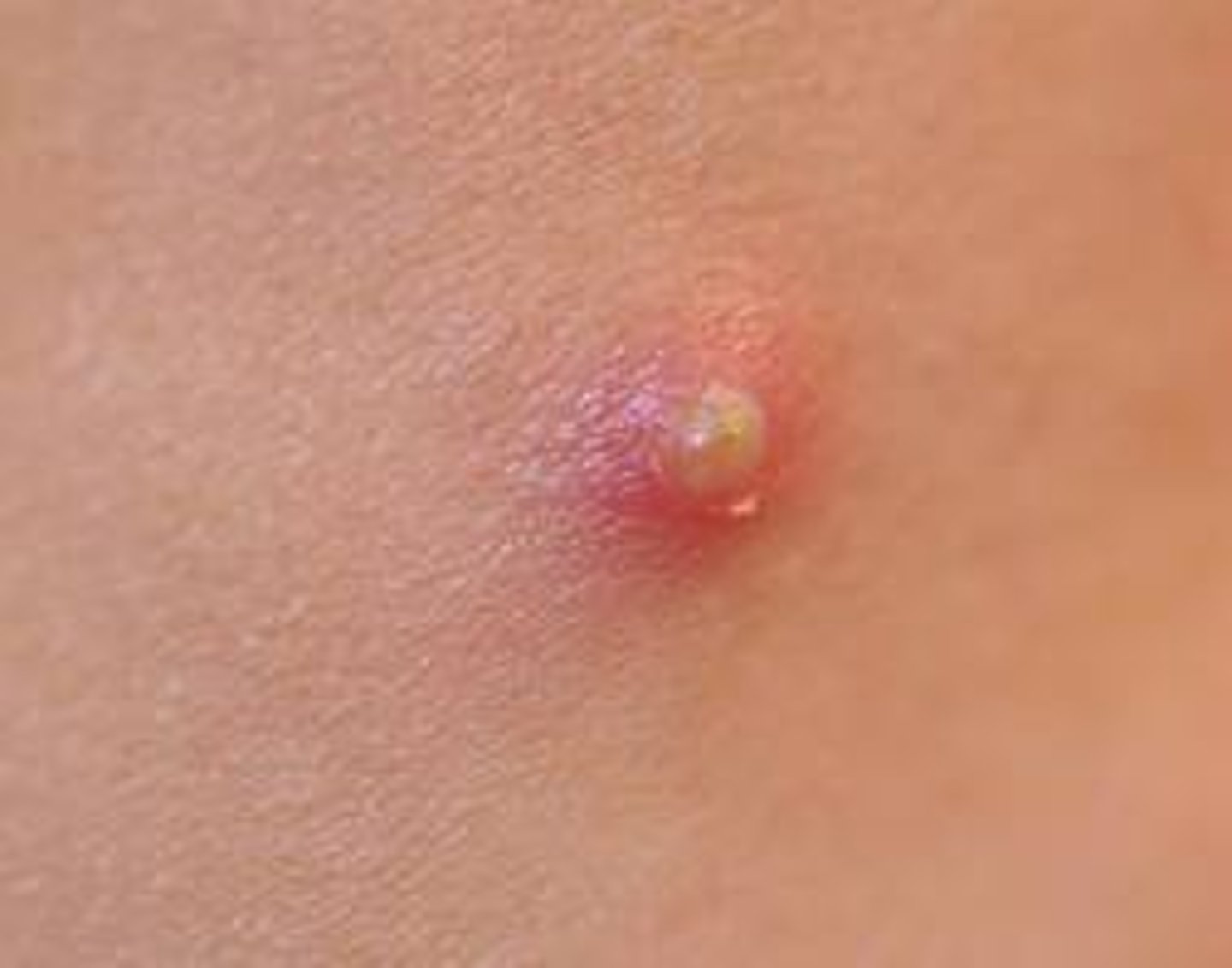
Ulcer
Erosion of skin (canker sores)
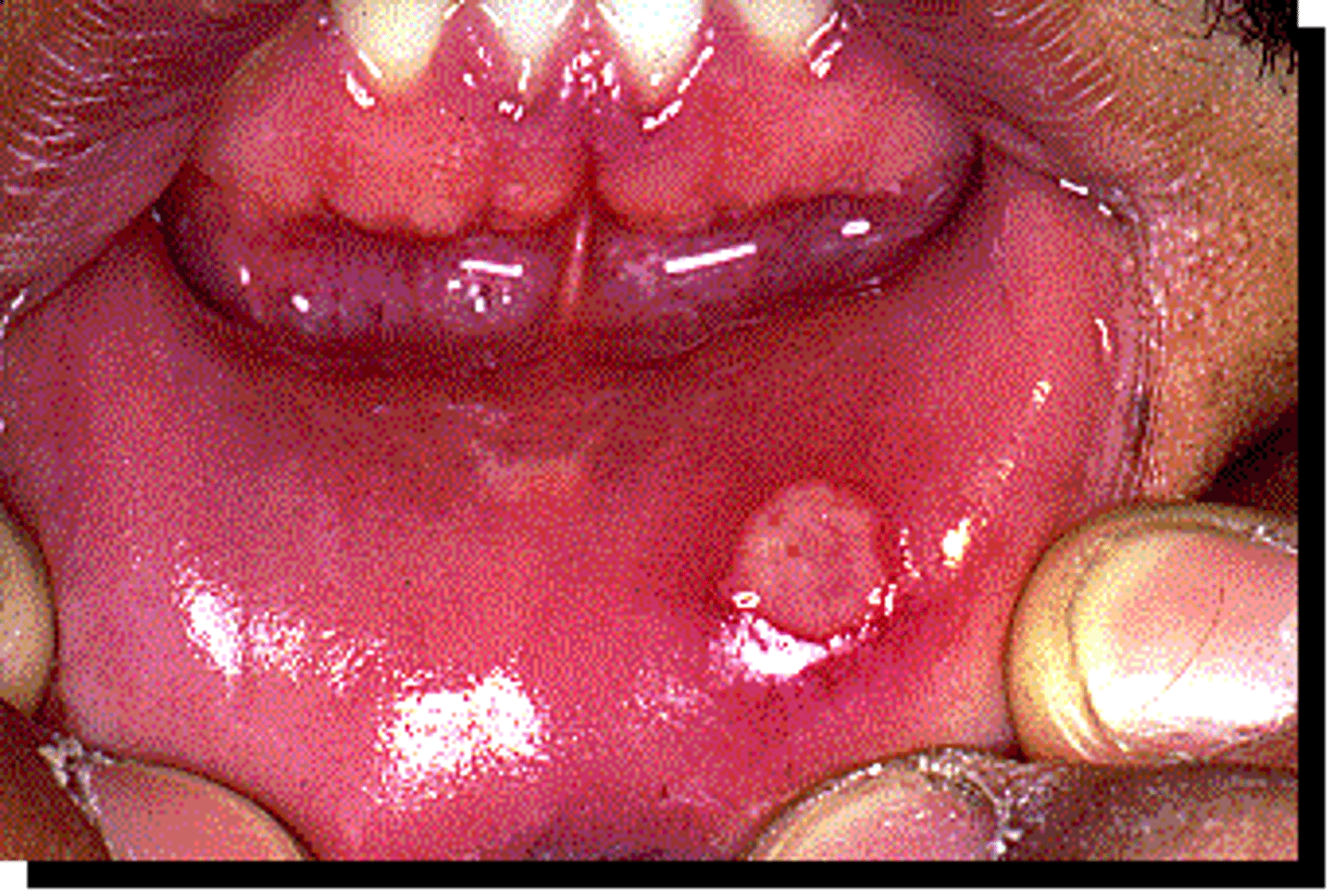
Wheal
red, itchy, fluid containing papule (hives)
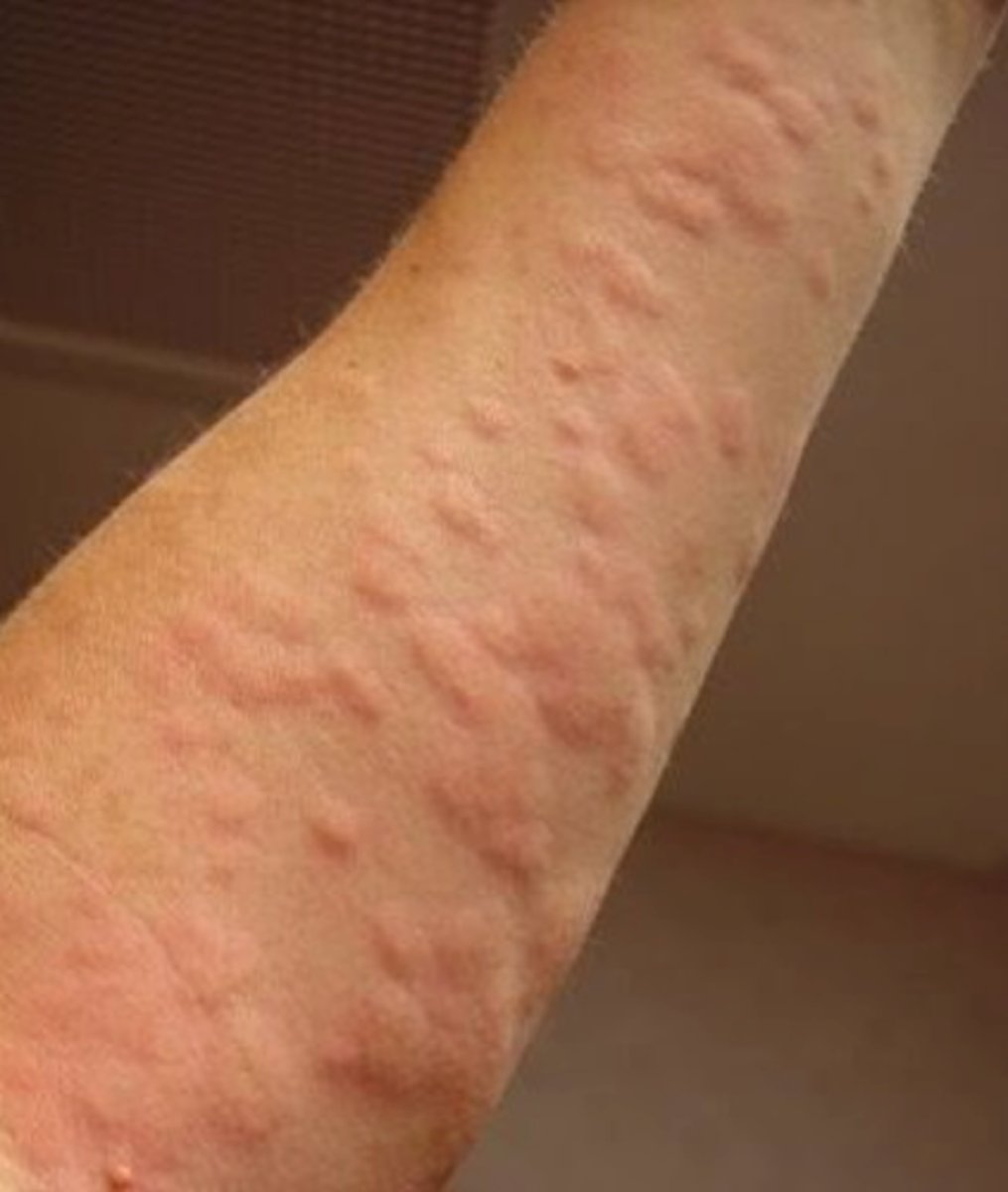
Cyst
thick-walled sac containing fluid (sebaceous cyst)
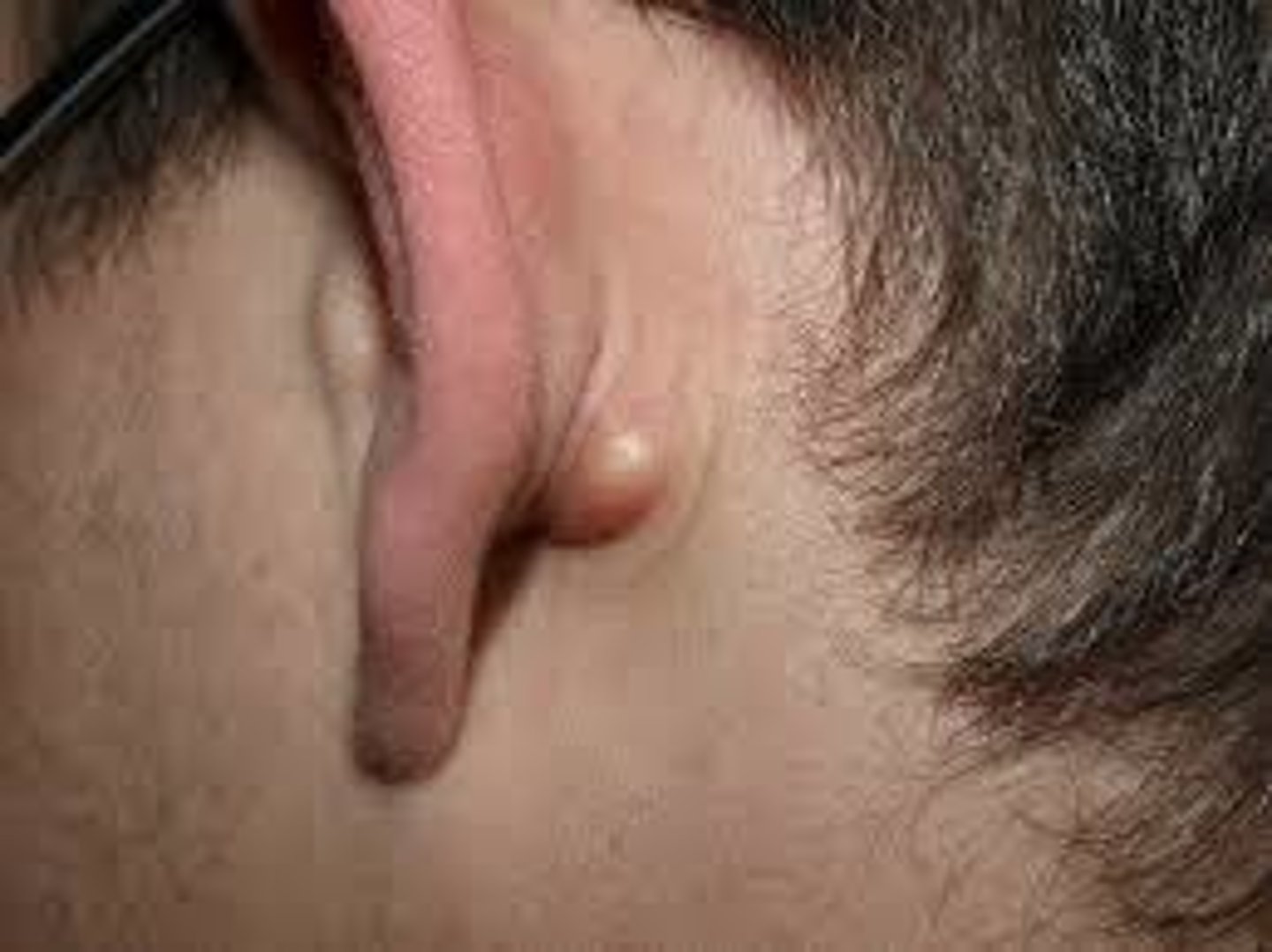
Fissure
Split or crack in skin (anal fissure)
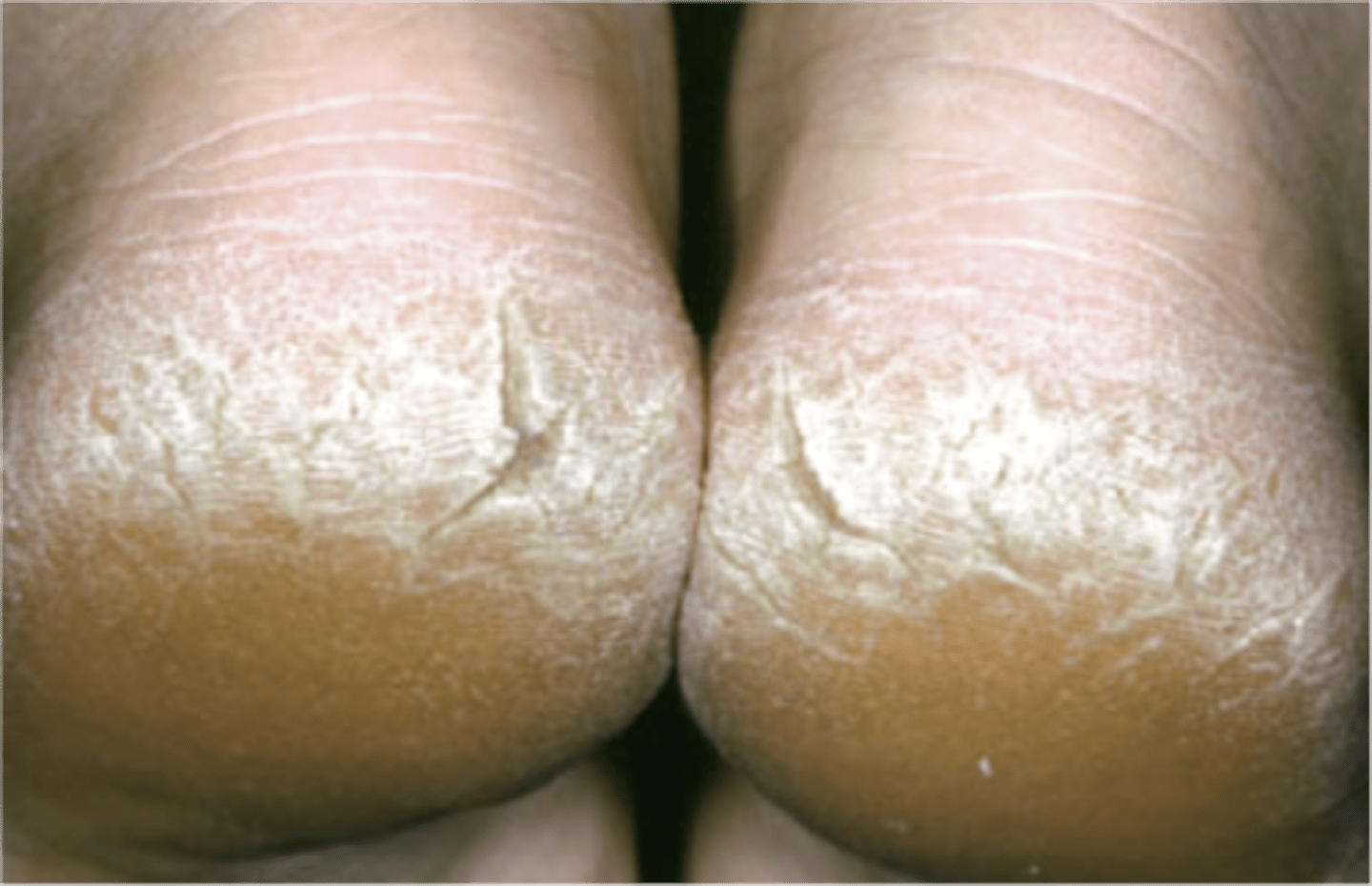
Alopecia
loss of hair
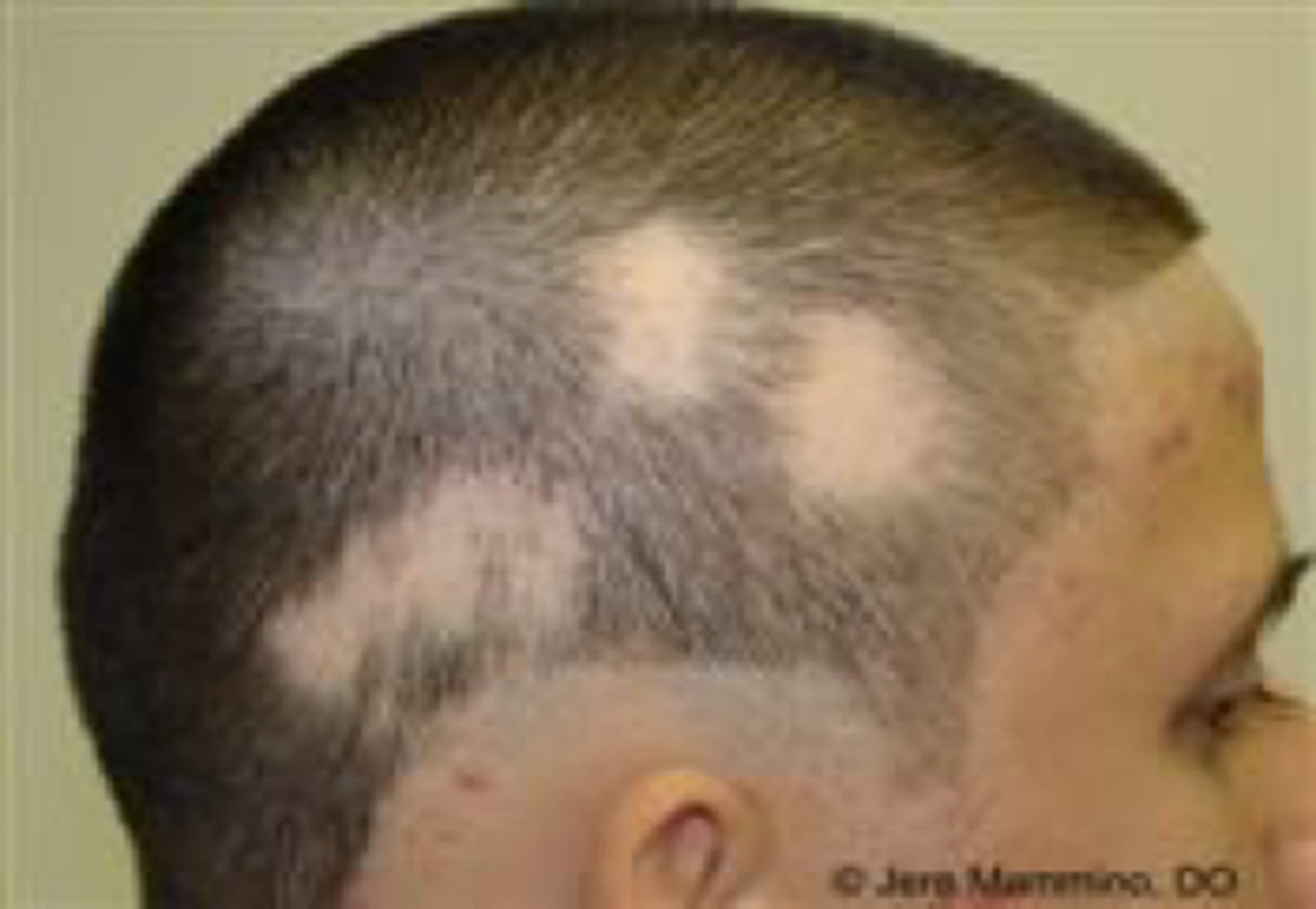
Dermatitis
any inflammation of the skin (contact Dermatitis)
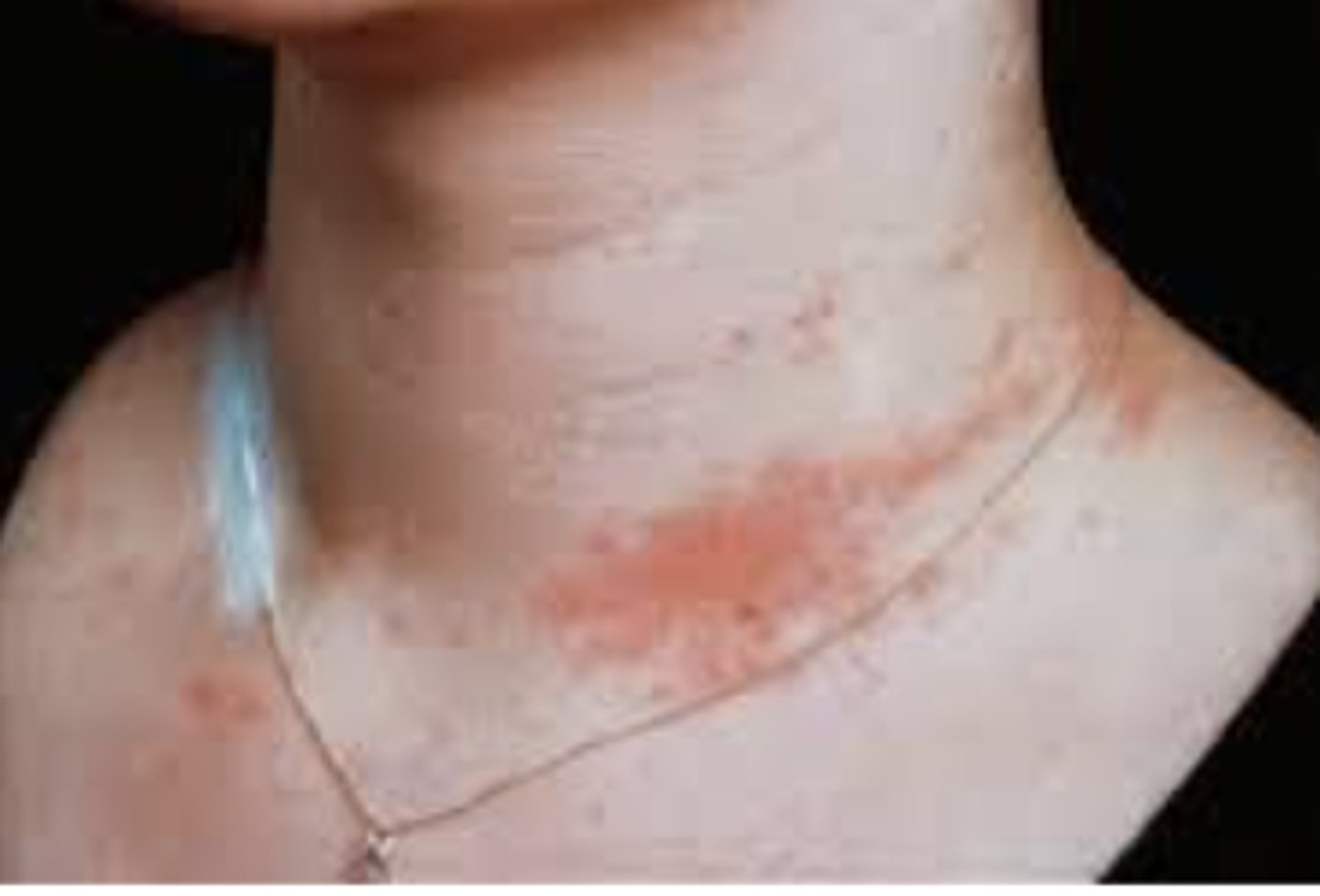
Cellulitis
inflammation of Connective Tissue (most commonly due to bacterial infection)
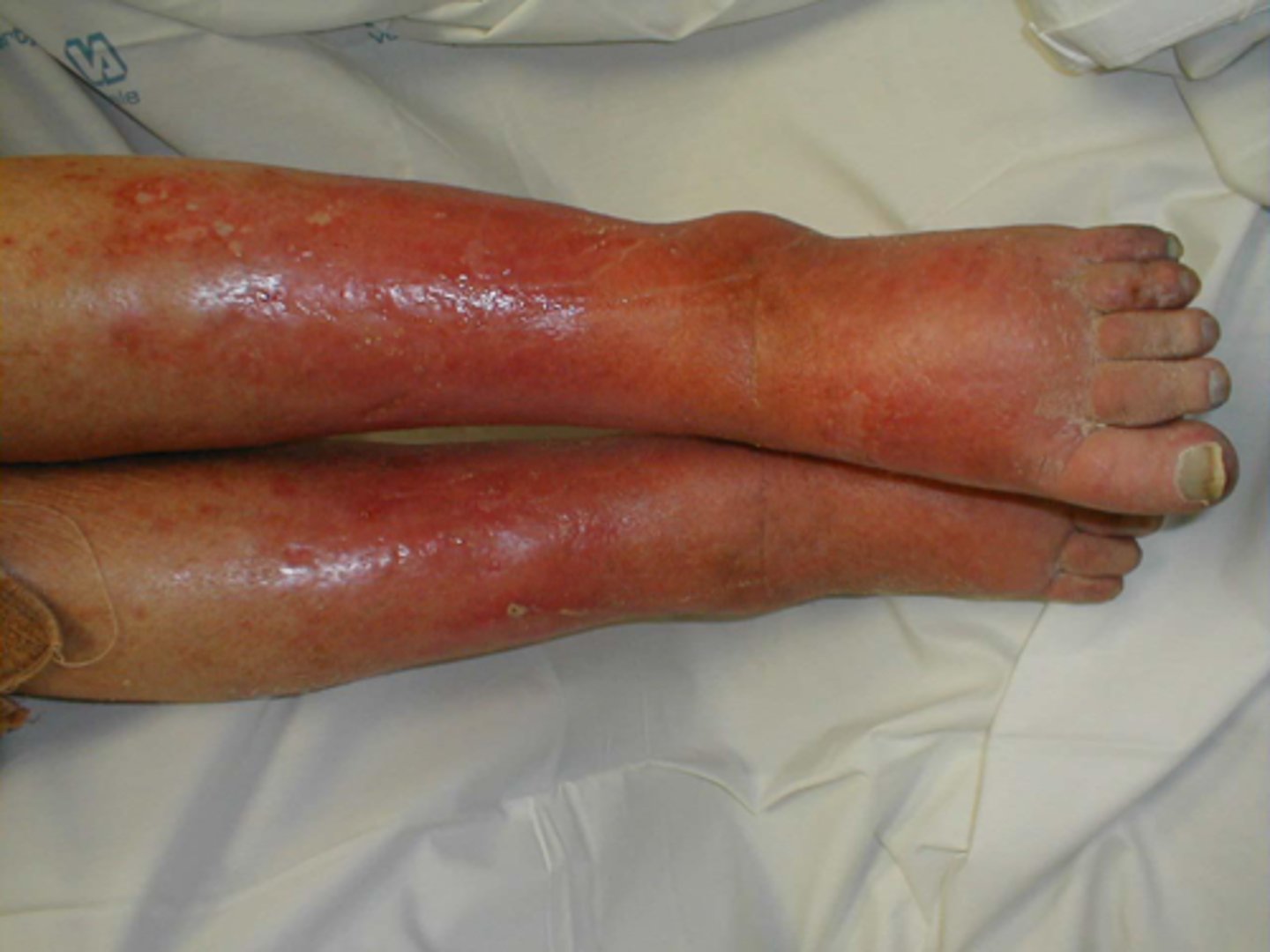
Acne Vulgaris
common type of acne. Sebaceous glans produce excessive oil which blocks pores. Bacteria builds up in oil.
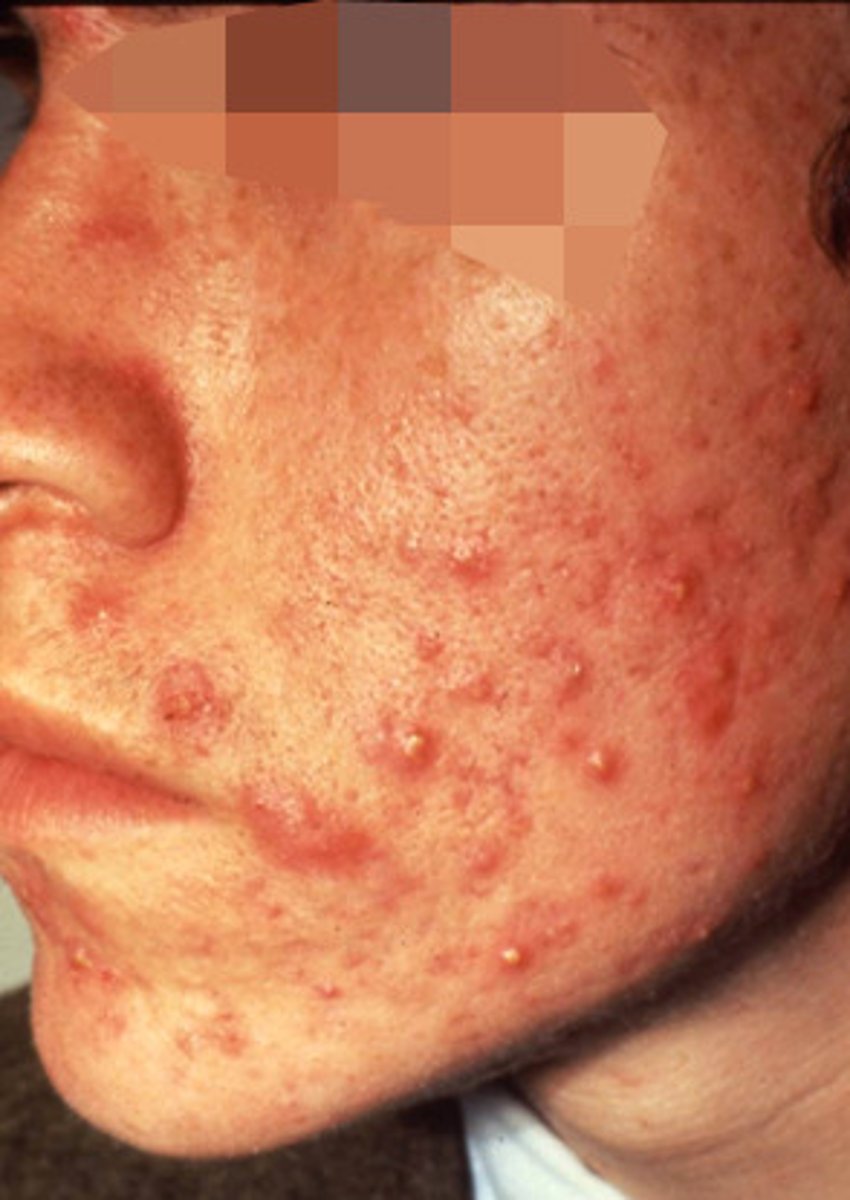
Furuncle
Abscess of the hair follicle or sebaceous oil gland (Boil)

Herpes Simplex
Viral infection. No cure. (cold sore, STD, chicken pox)
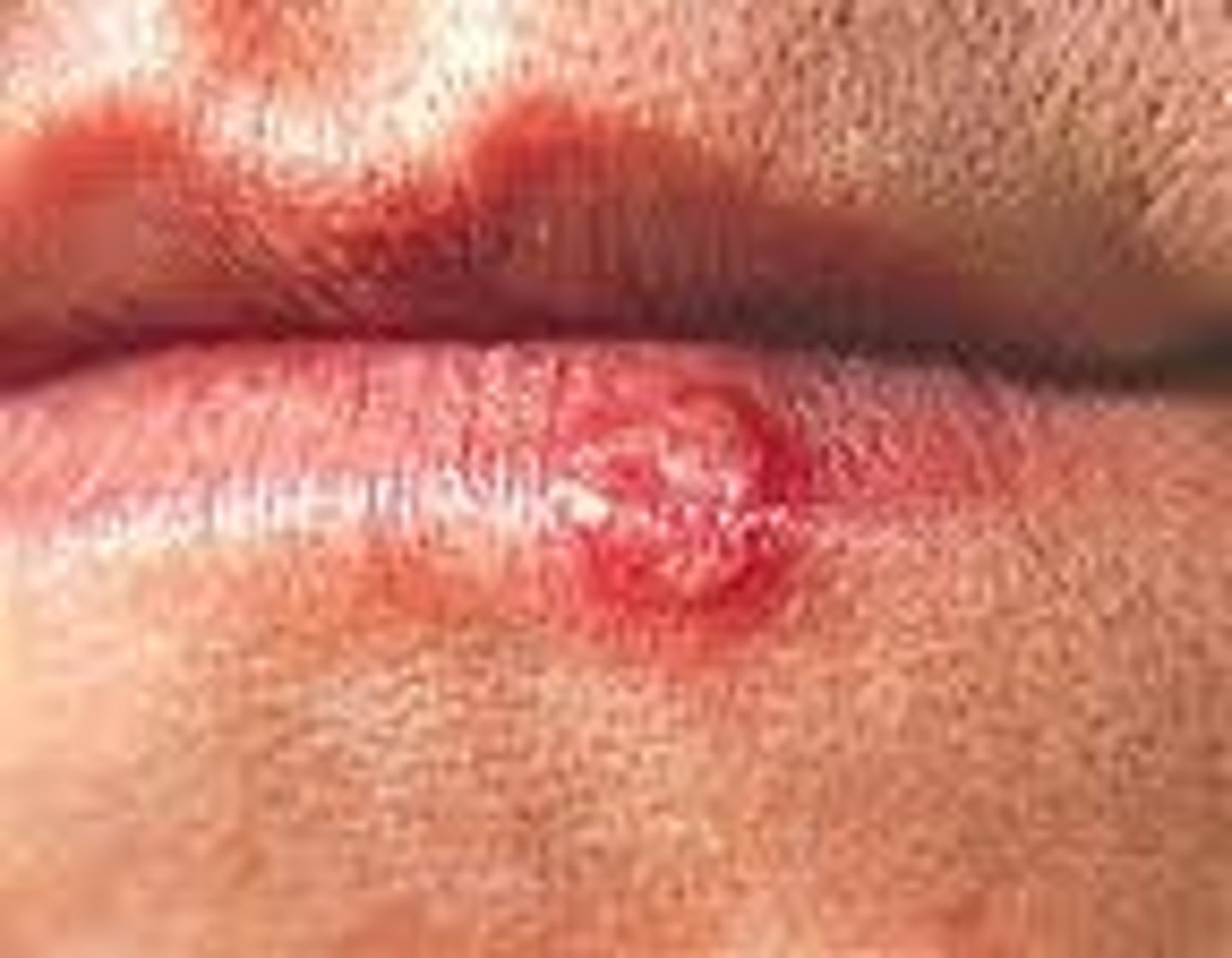
onychomycosis
fungal infection of the nail
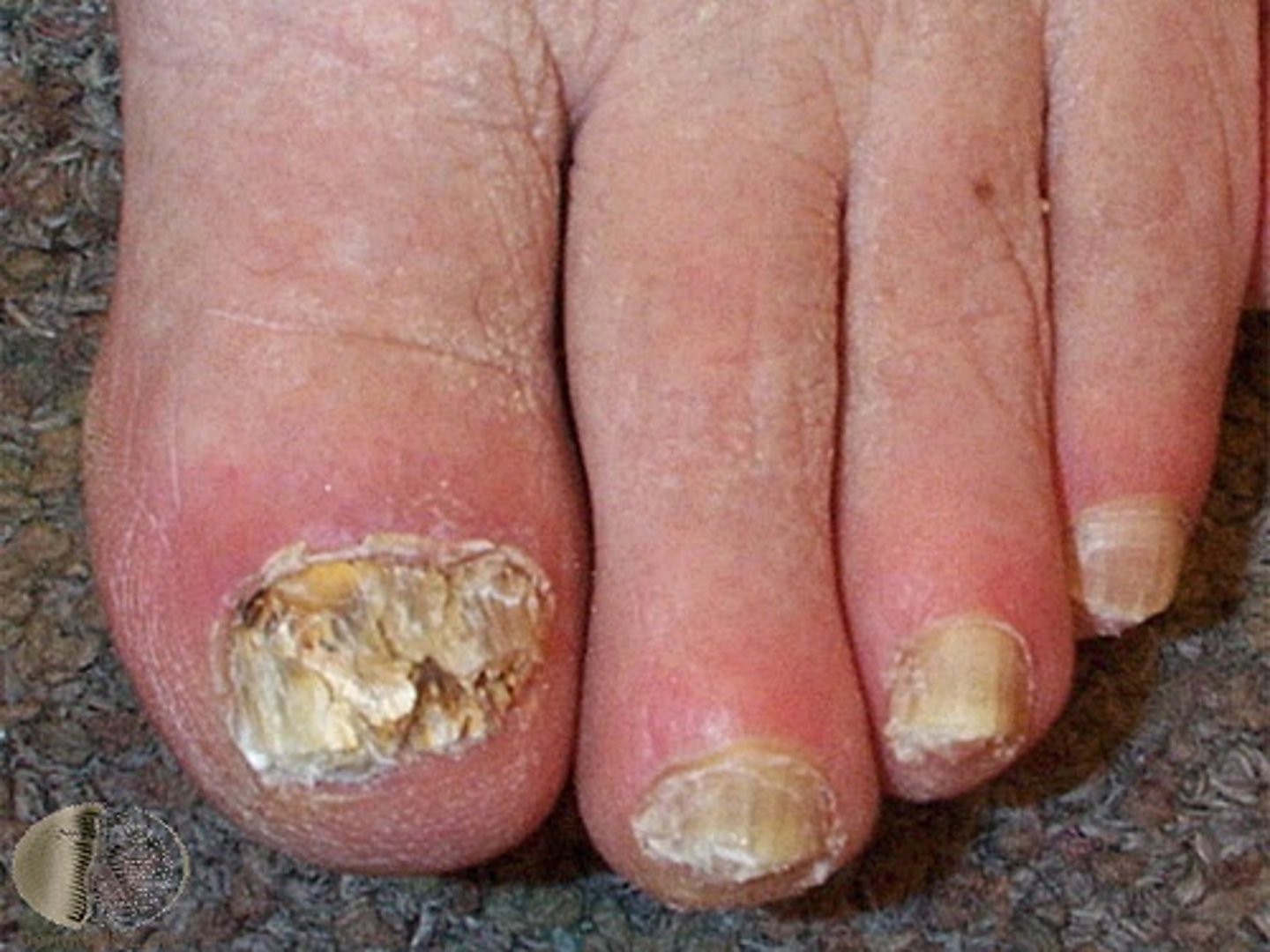
Tinea
Fungus (ringworm)
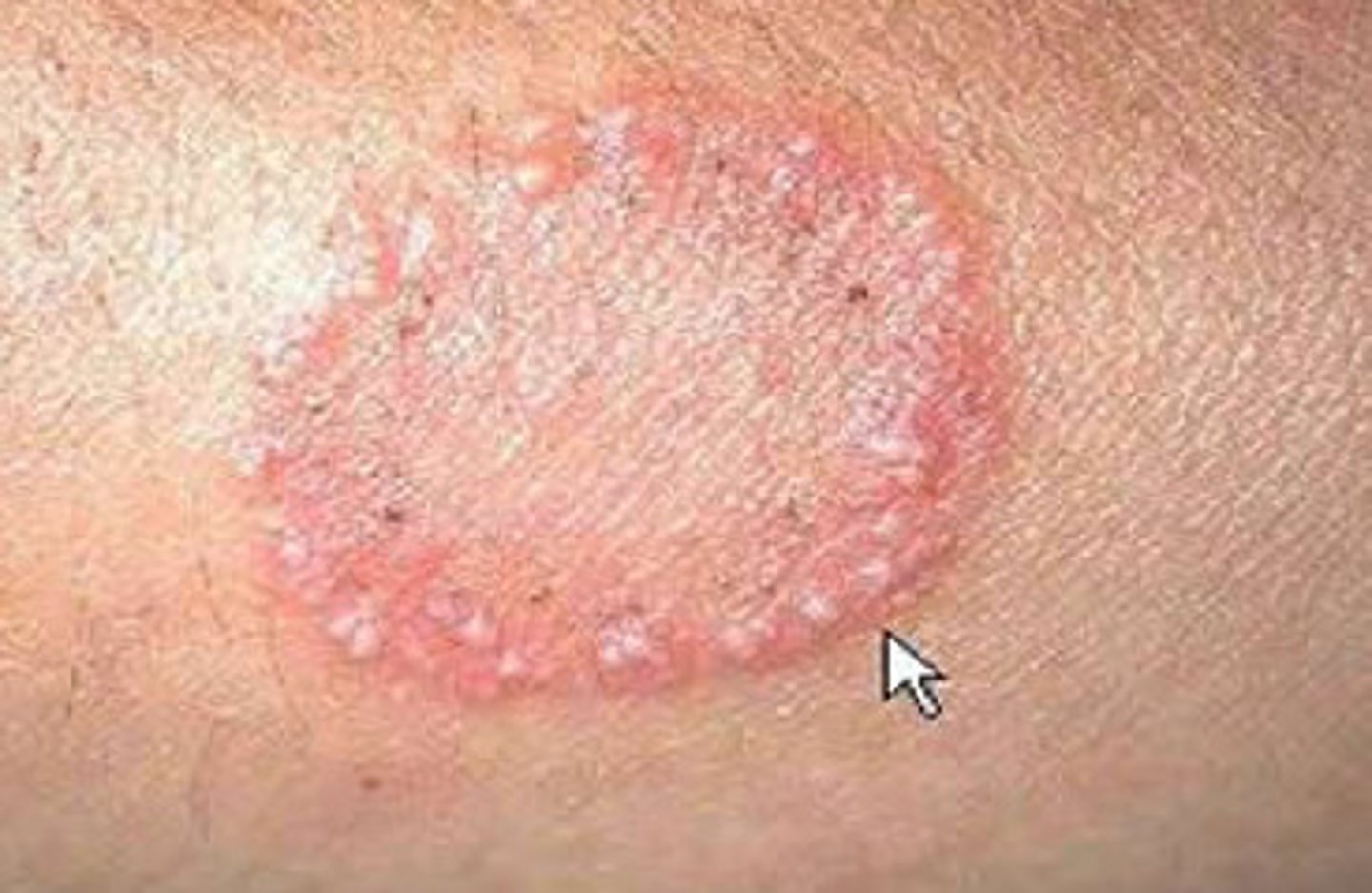
Tinea Corporis
Ringworm, fungal infection of the body

Tinea Capitis
ringworm, fungal infection of the scalp
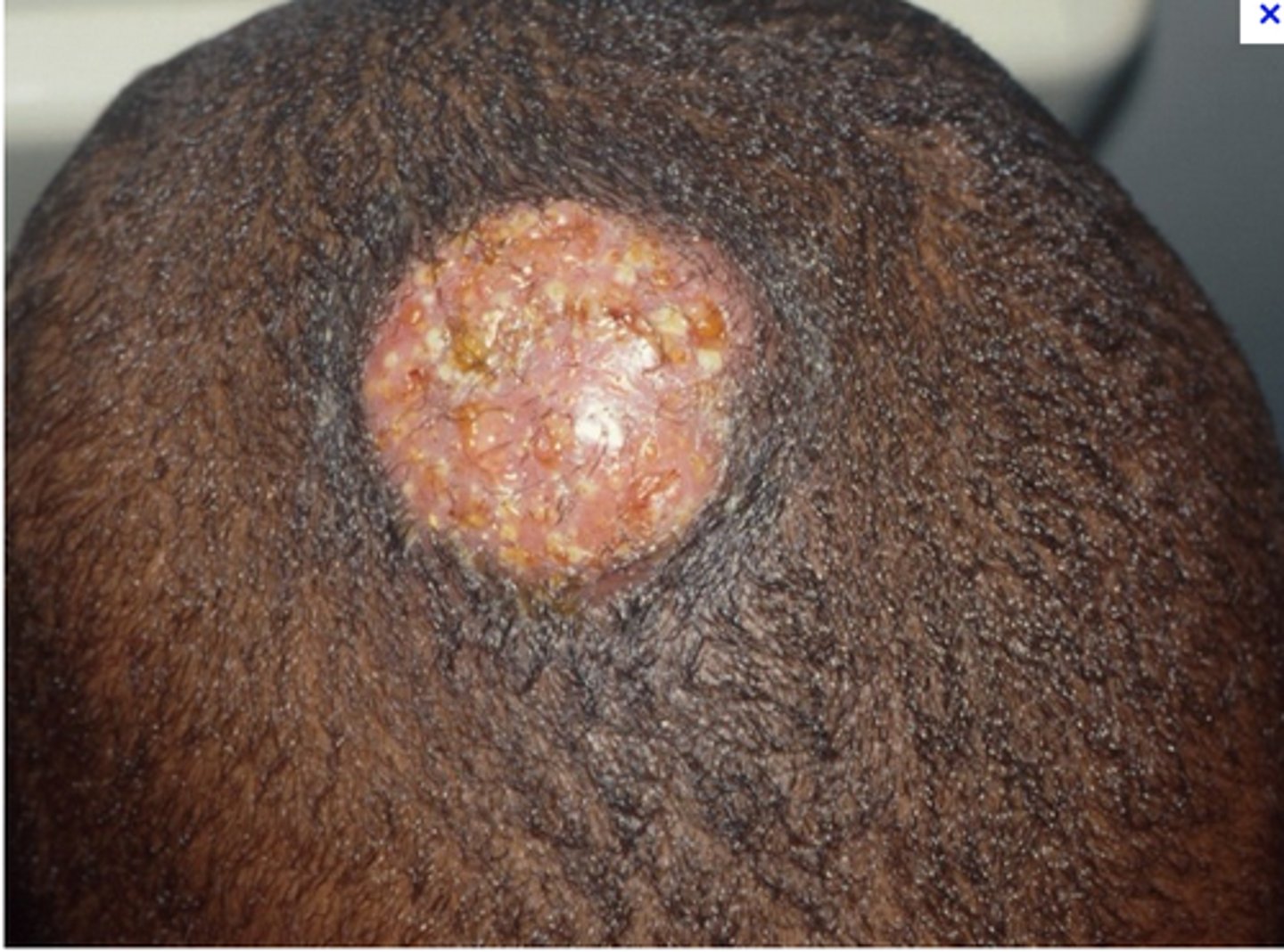
Tinea Cruis
Ringworm, fungal infection of the groin (jock itch)
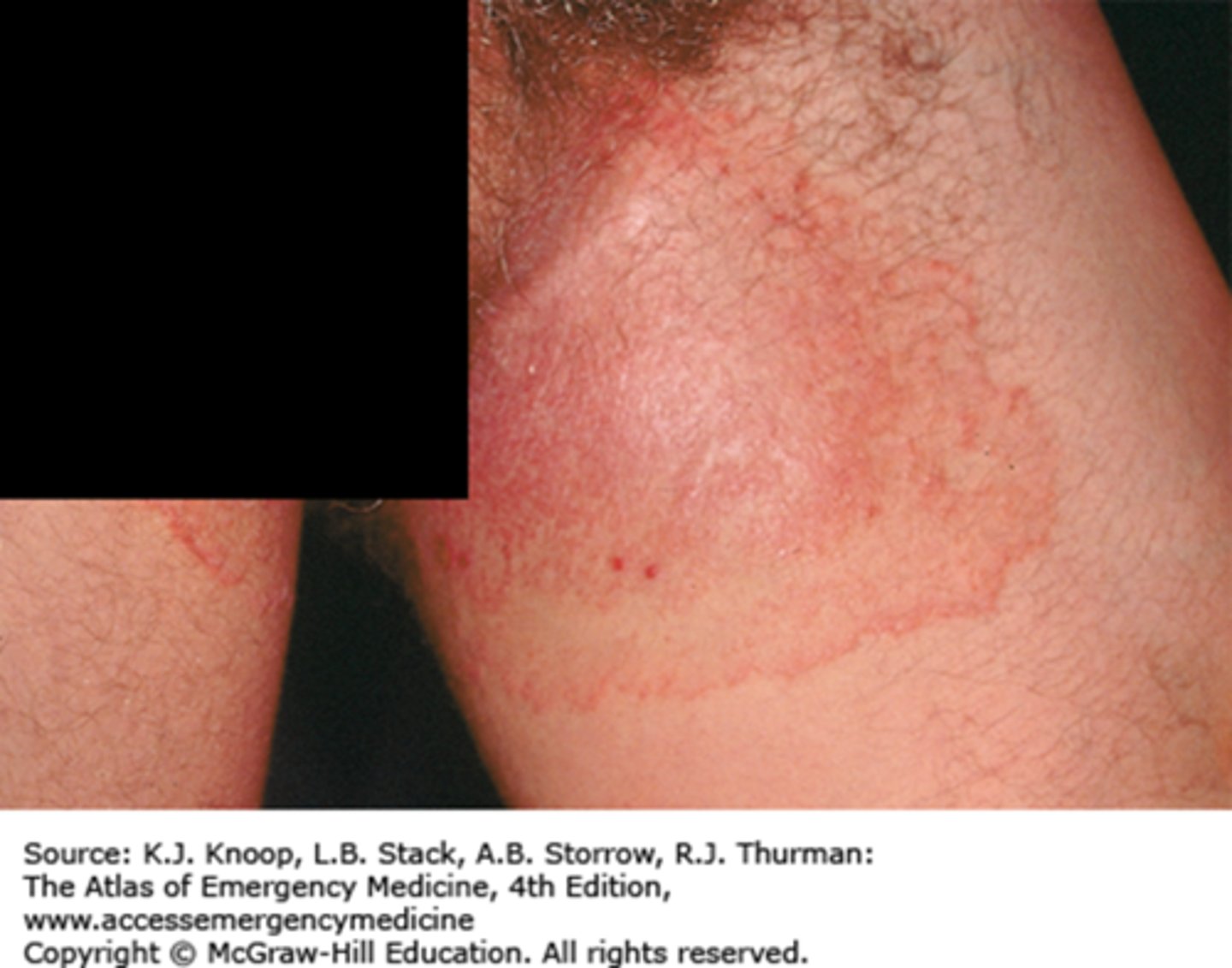
Tinea Pedis
Ringworm, fungal infection of the foot (athletes foot)
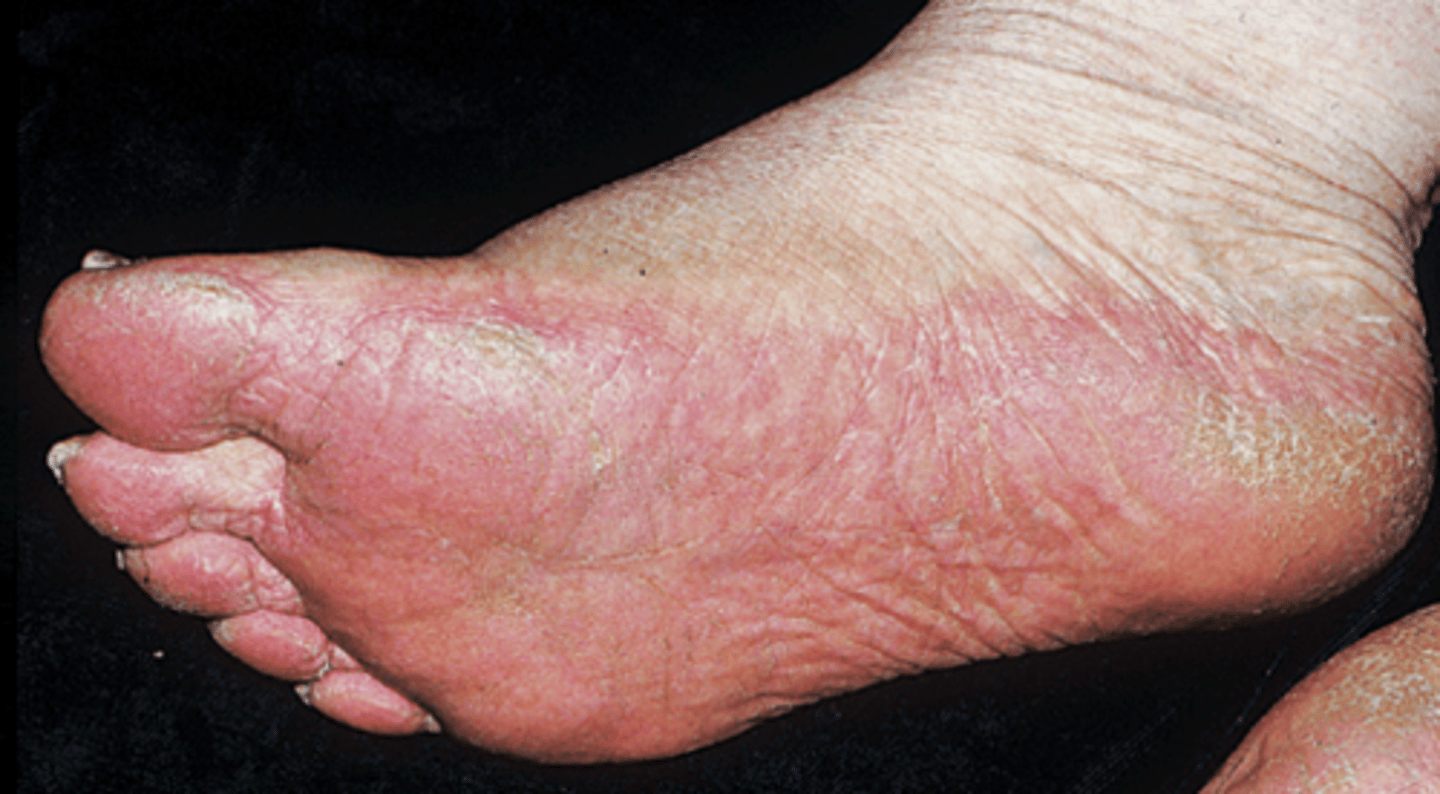
Vitiligo
Autoimmune disease that stops melanocytes from functioning
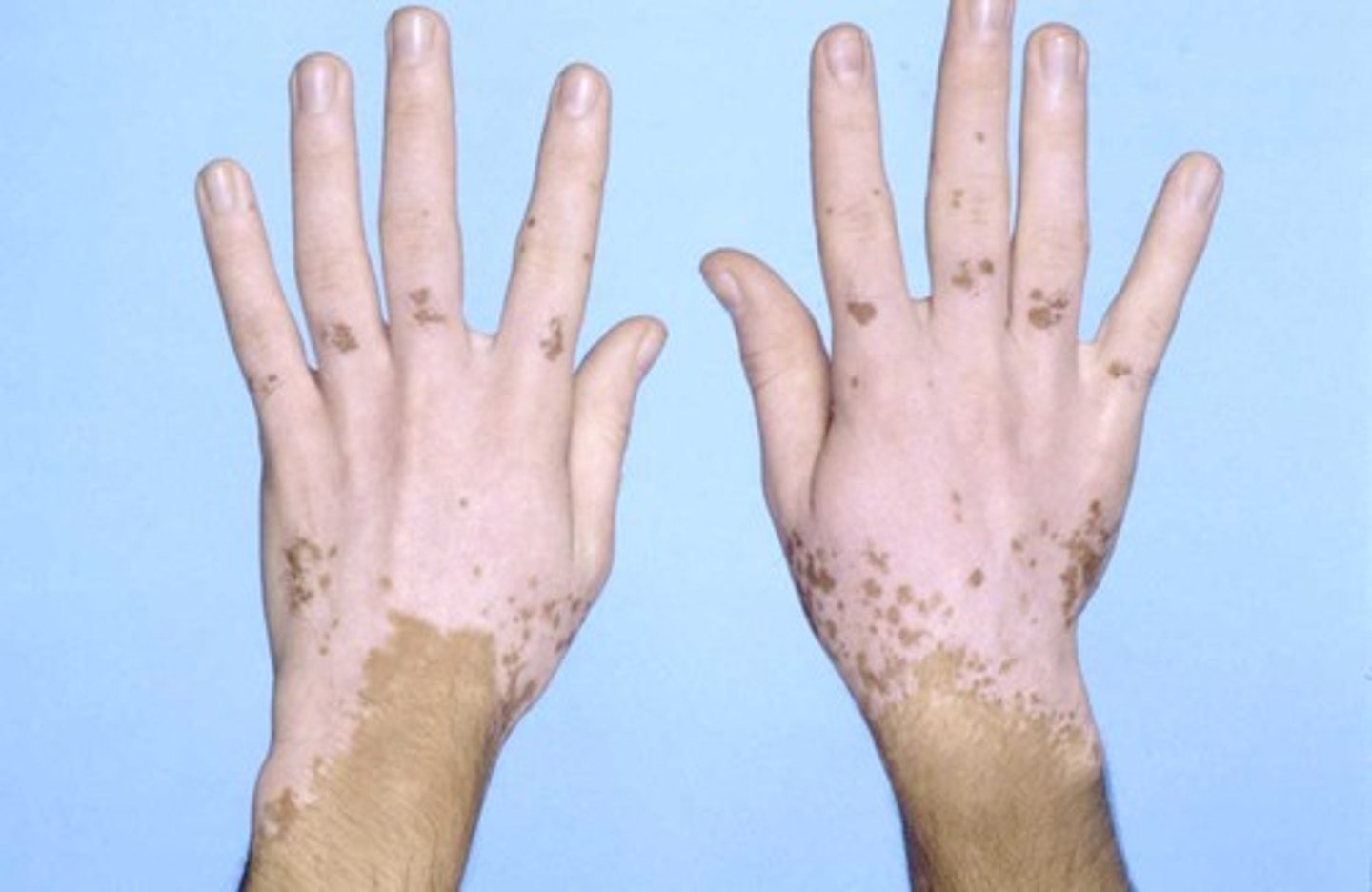
Gangrene
Death of tissue (necrosis). Appears black and can spread. (Tx: Amputation)
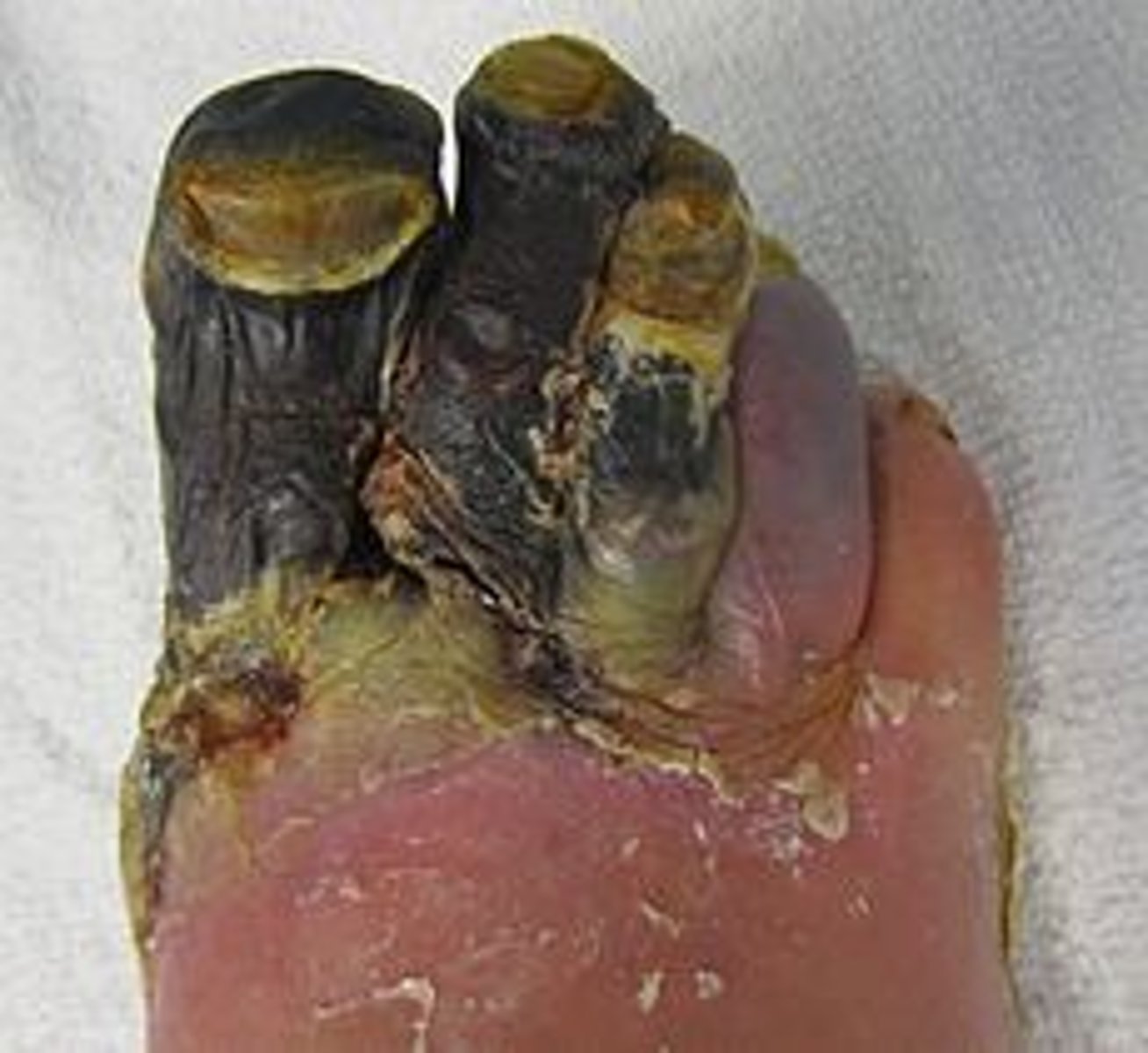
Decubitus Ulcer
skin btw hard places for too long causes compromised blood supply. Epidermis/dermis breakdown and bone can be exposed (bedsore)
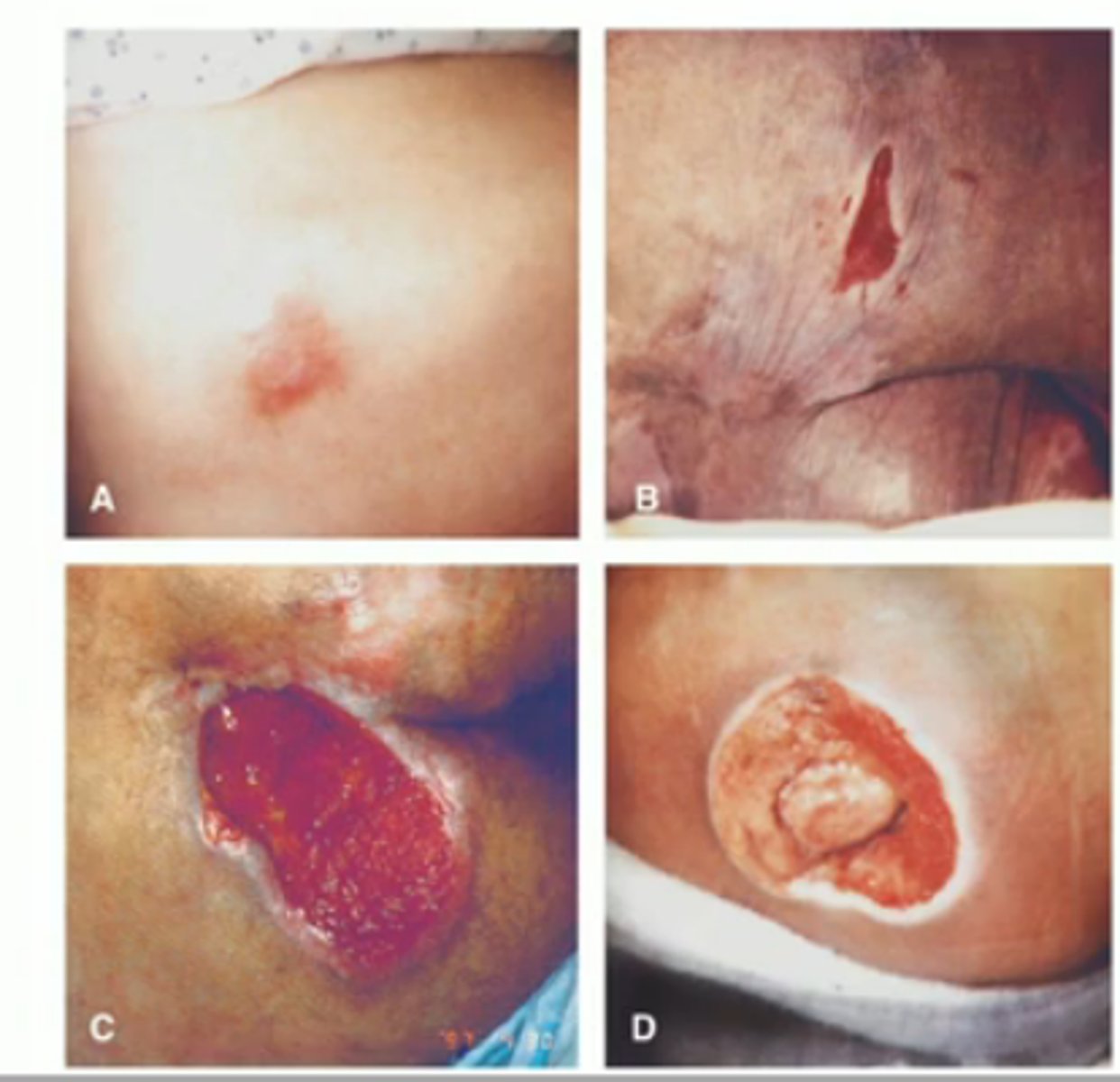
Eczema
Inflammation of the epidermis. Prutis=itchy, no cure
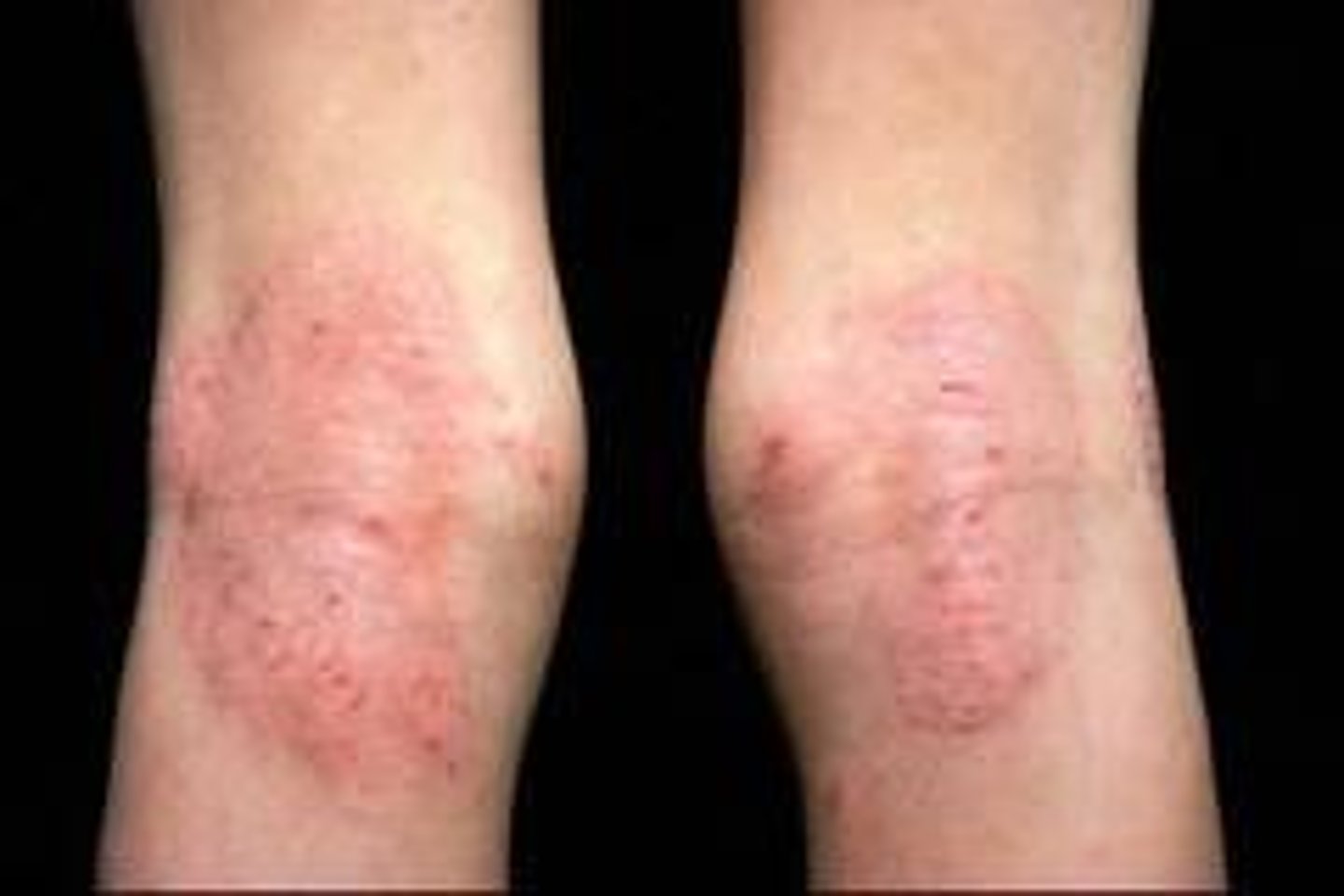
common Triad
Asthma
Hay fever (Allergic rhinitis)
Eczema
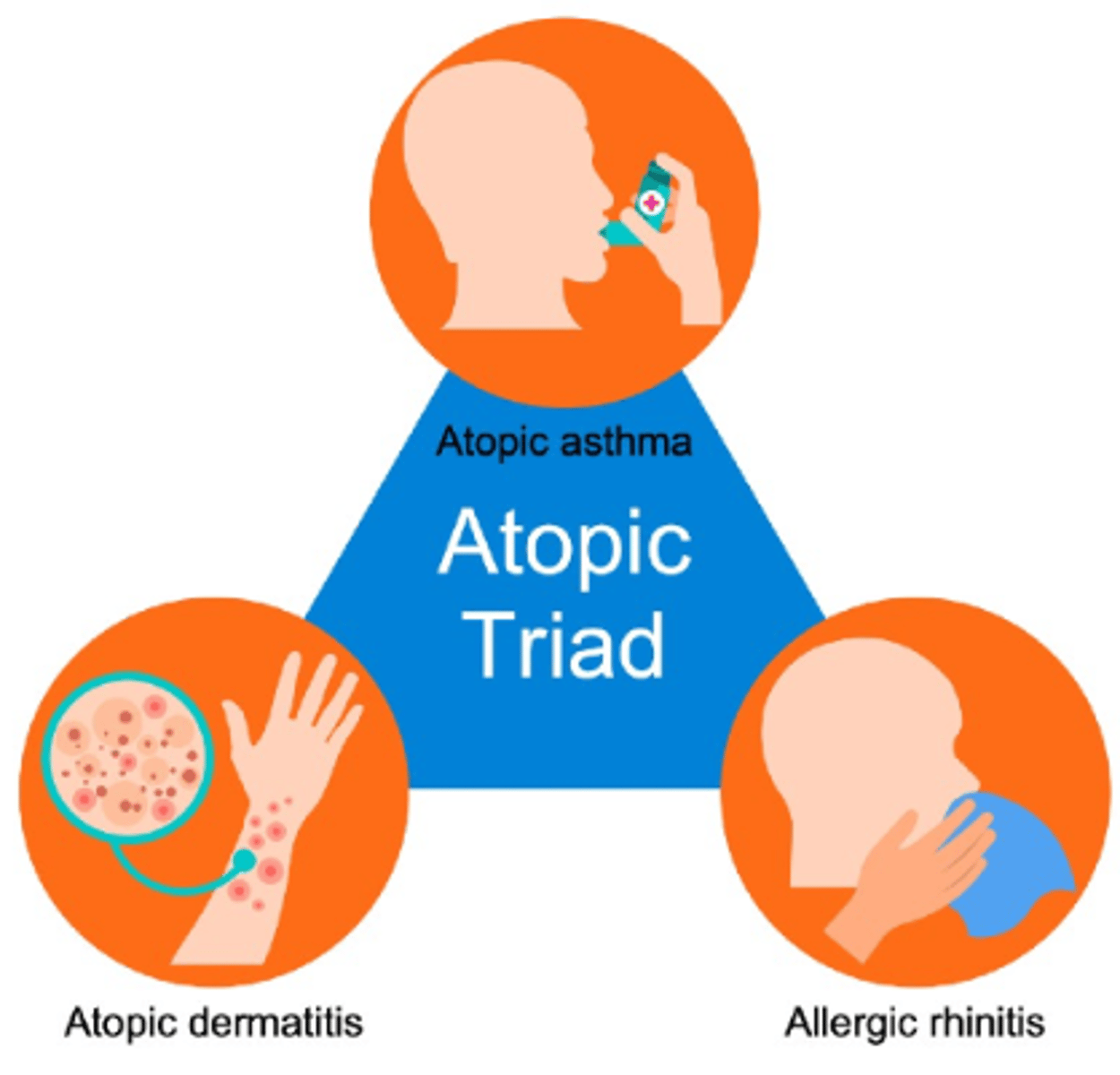
Psoriasis
Normal skin cells grow too fast. Appears as white scales that cannot be shed). No cure
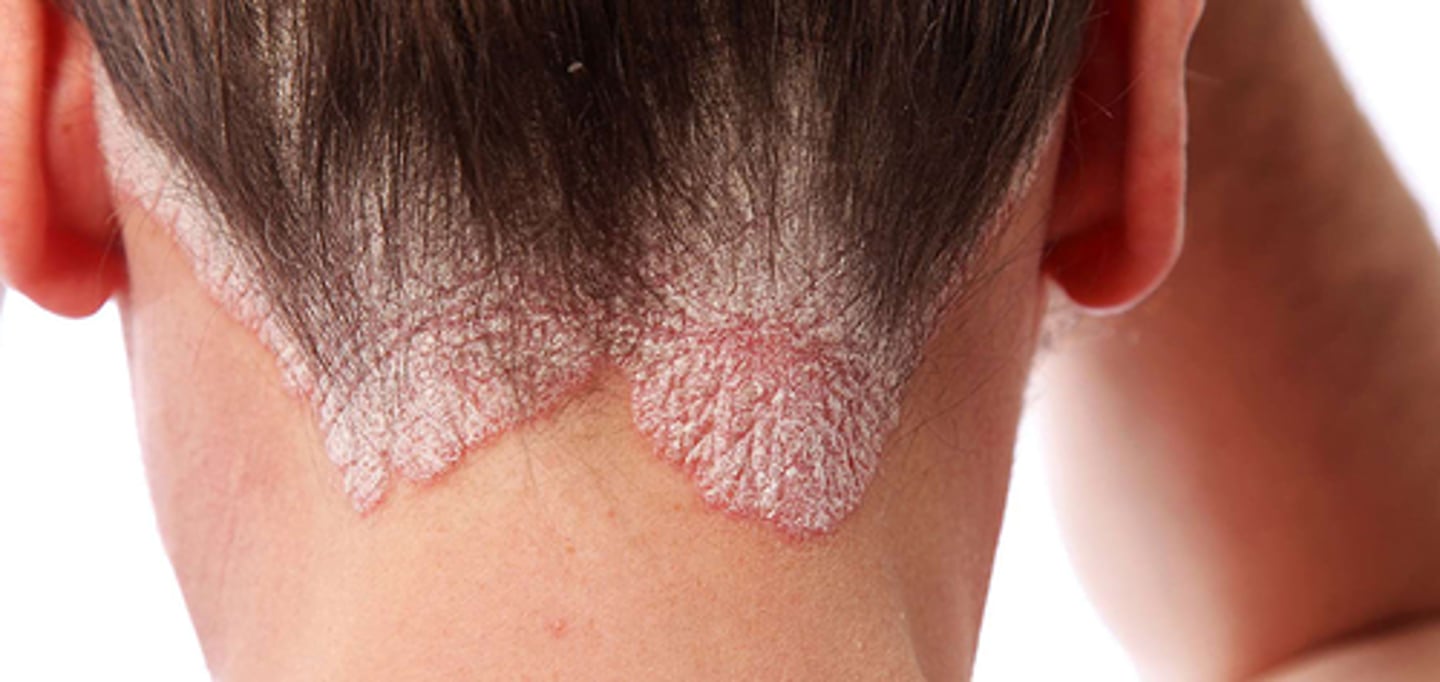
Basal cell carcinoma
least malignant and most common skin cancer
curable 99% of the time
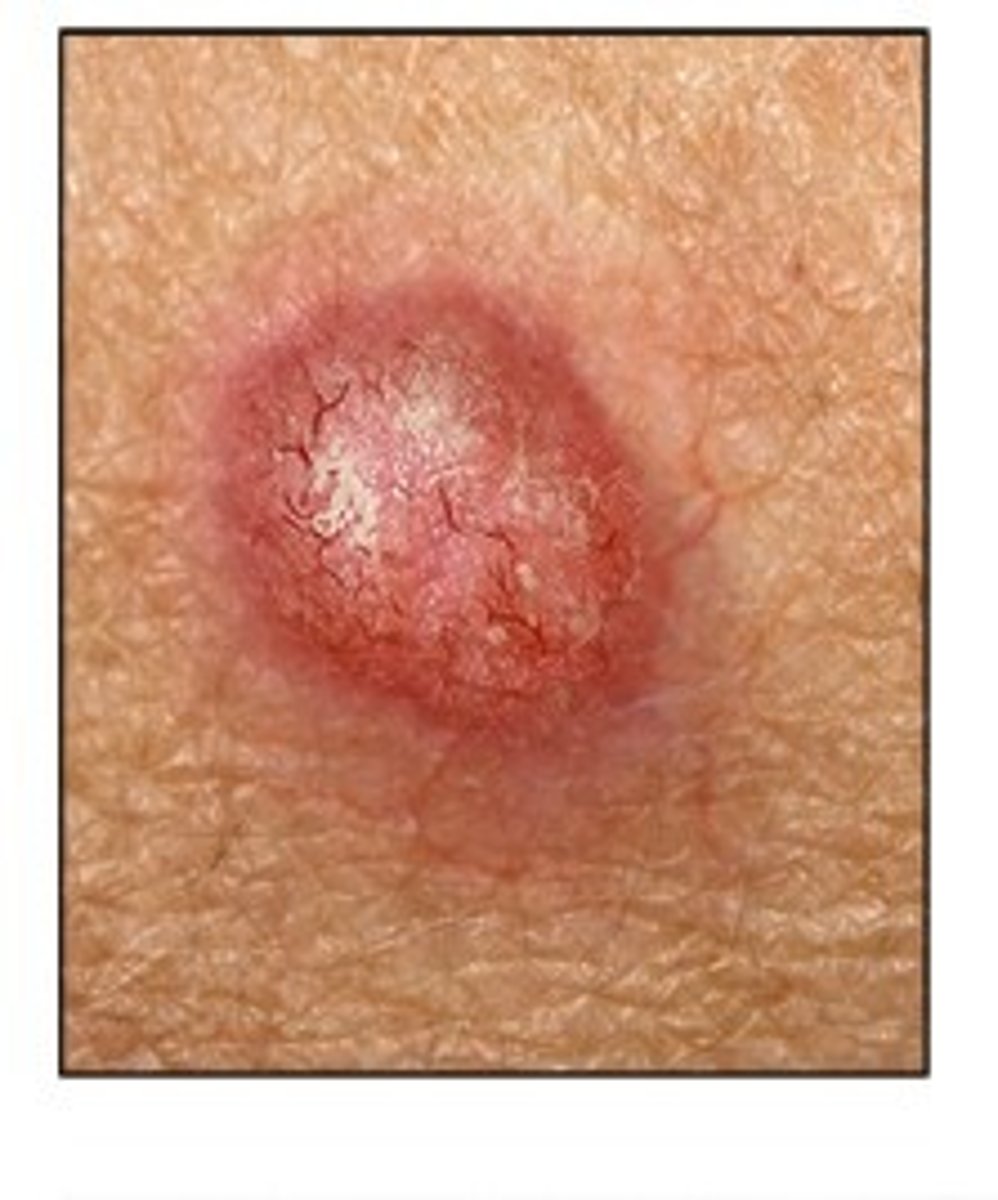
squamous cell carcinoma
2nd most common cancer. Primary cause UV ray exposure

Melanoma
most aggressive/fast growing
least common
often fetal
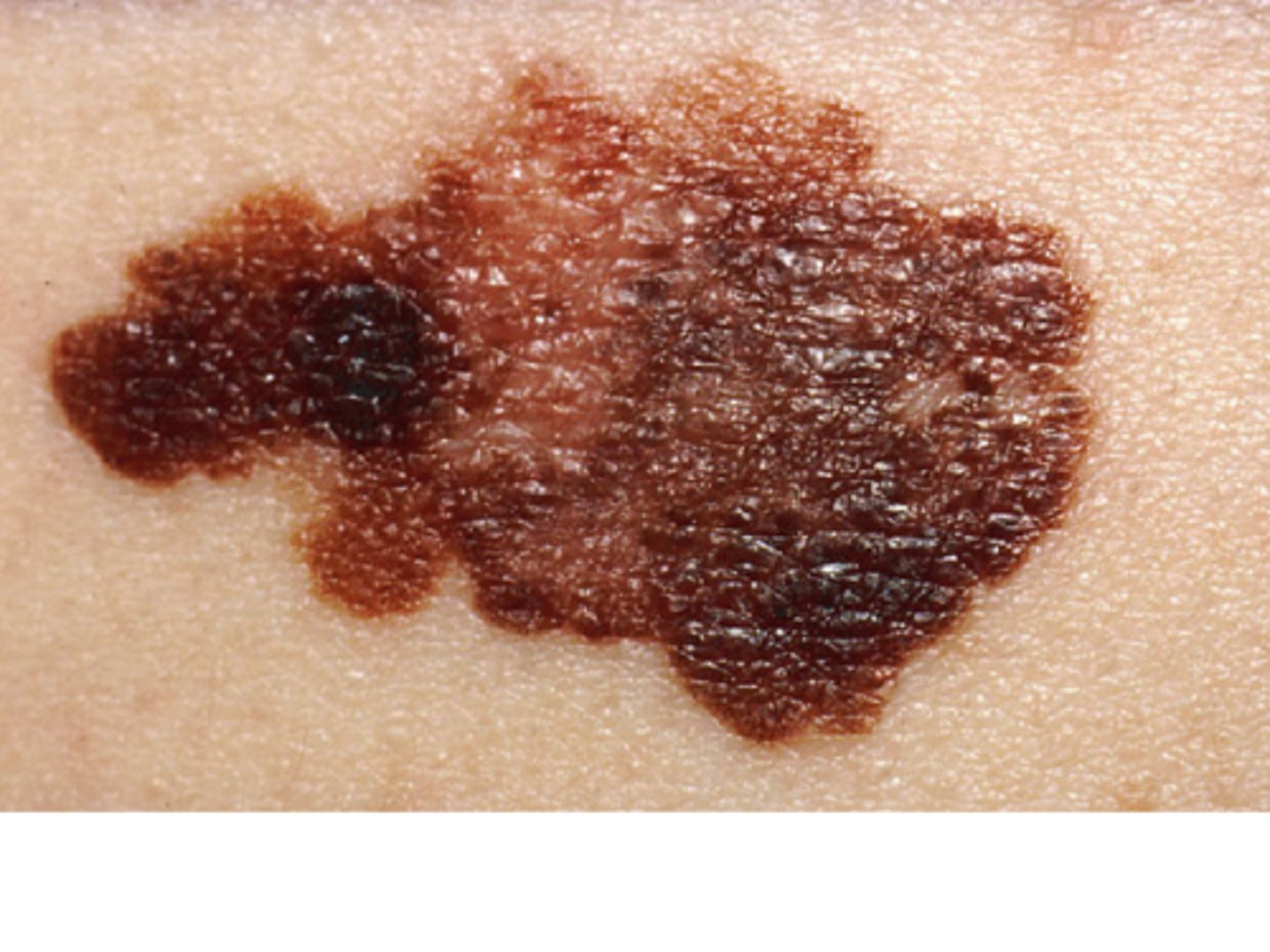
Actinic Keratoses
precancerous skin growths
due to sun exposure
pink/red scaly
can lead to squamous cell carcinoma
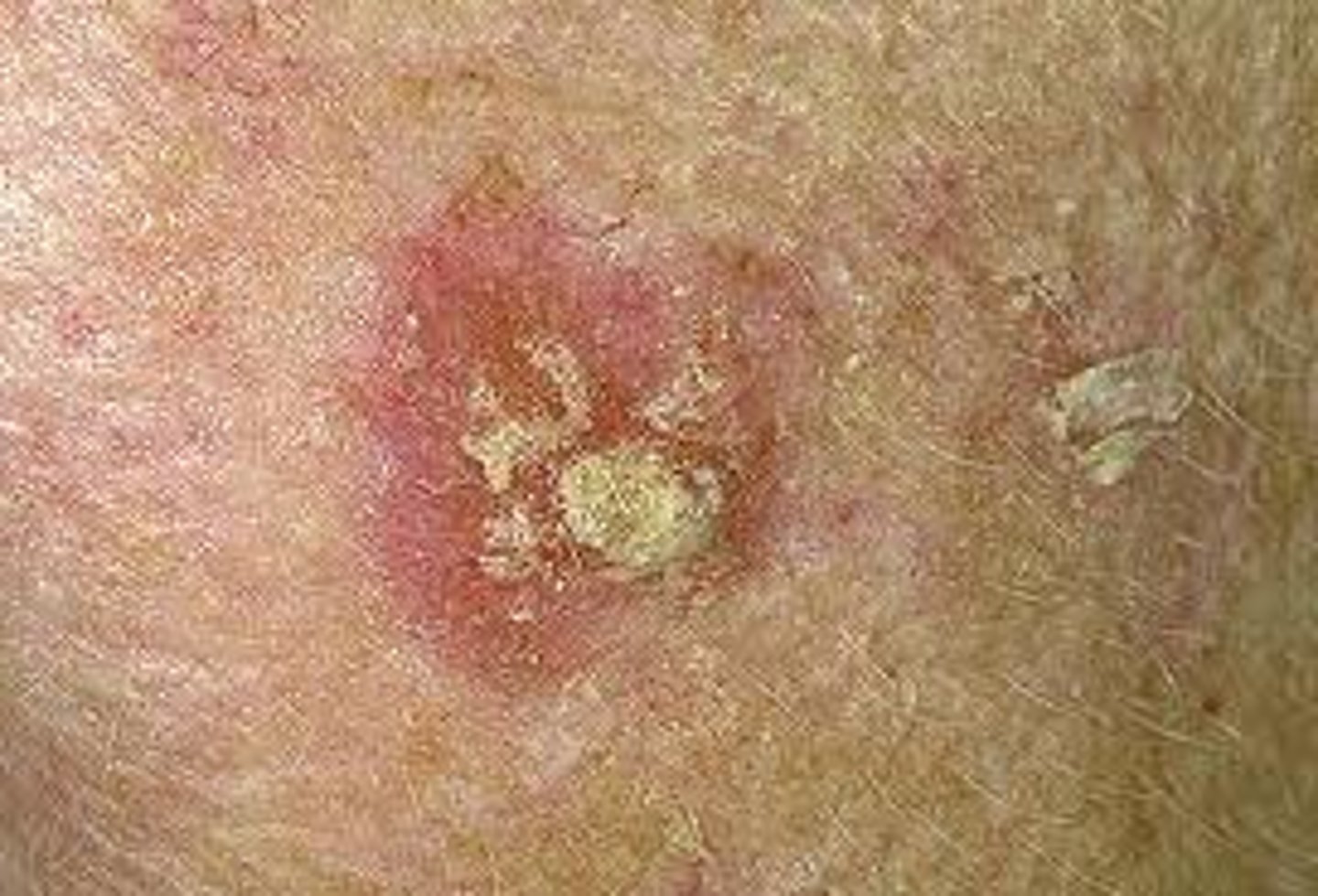
Red flags of malignancy
Asymmetrical sides
Border has indentations
Color is black/brown/tan
Diameter larger than 6mm
Elevation
